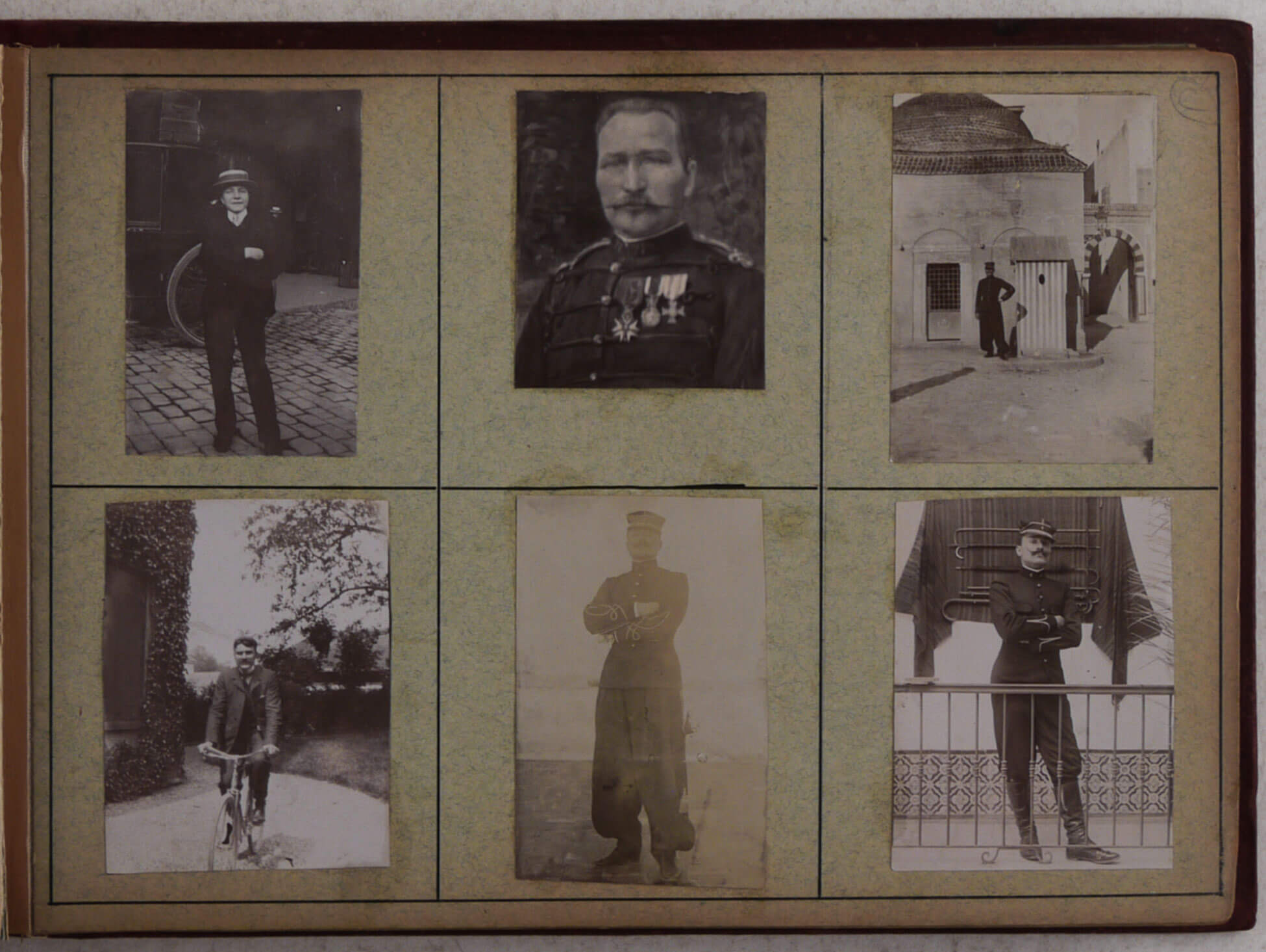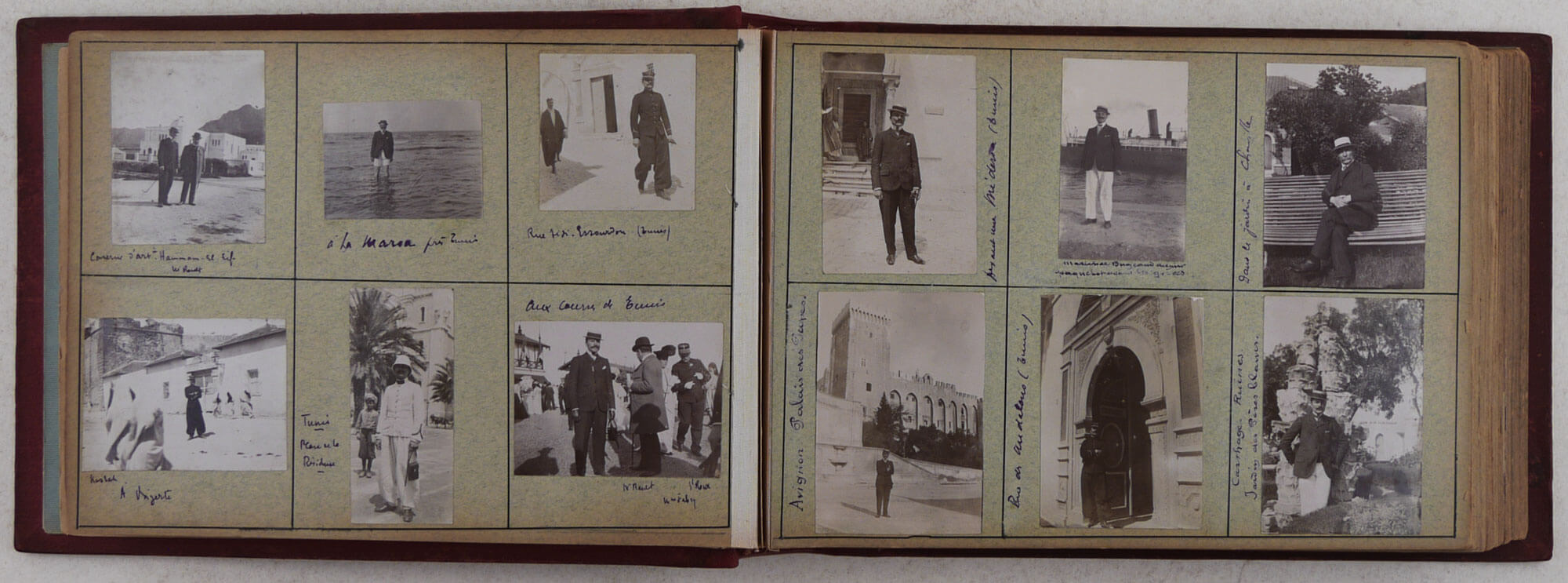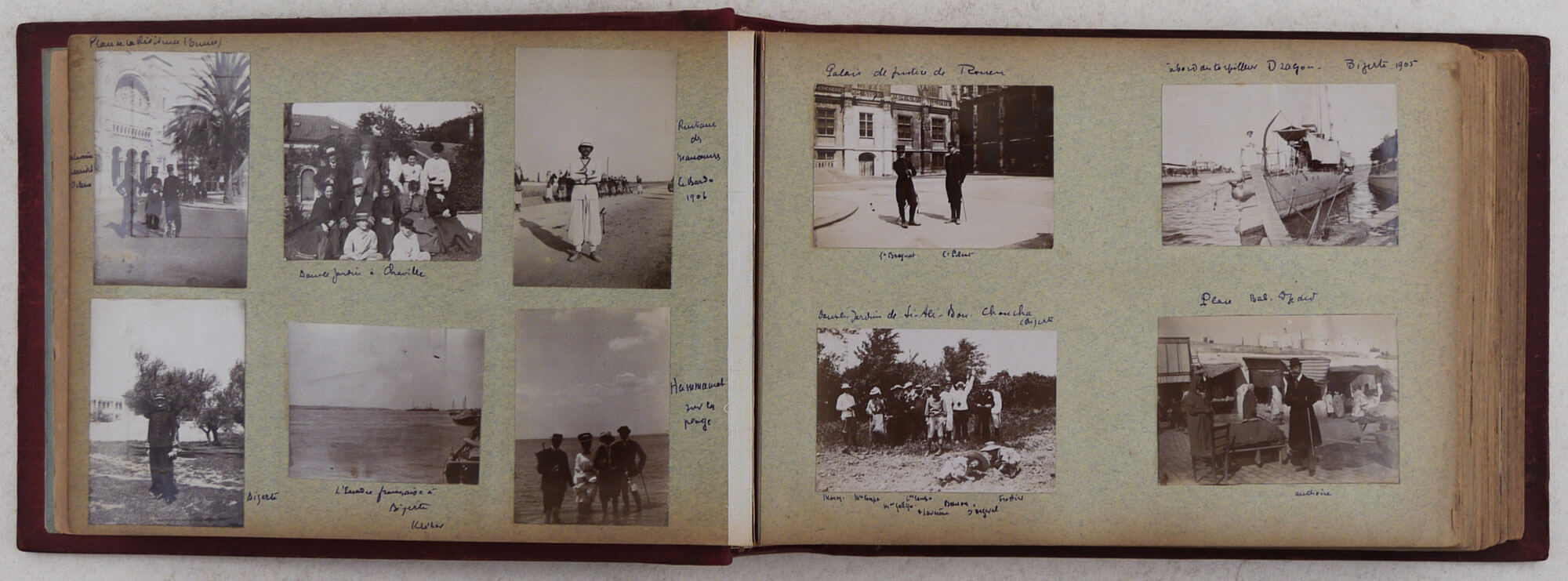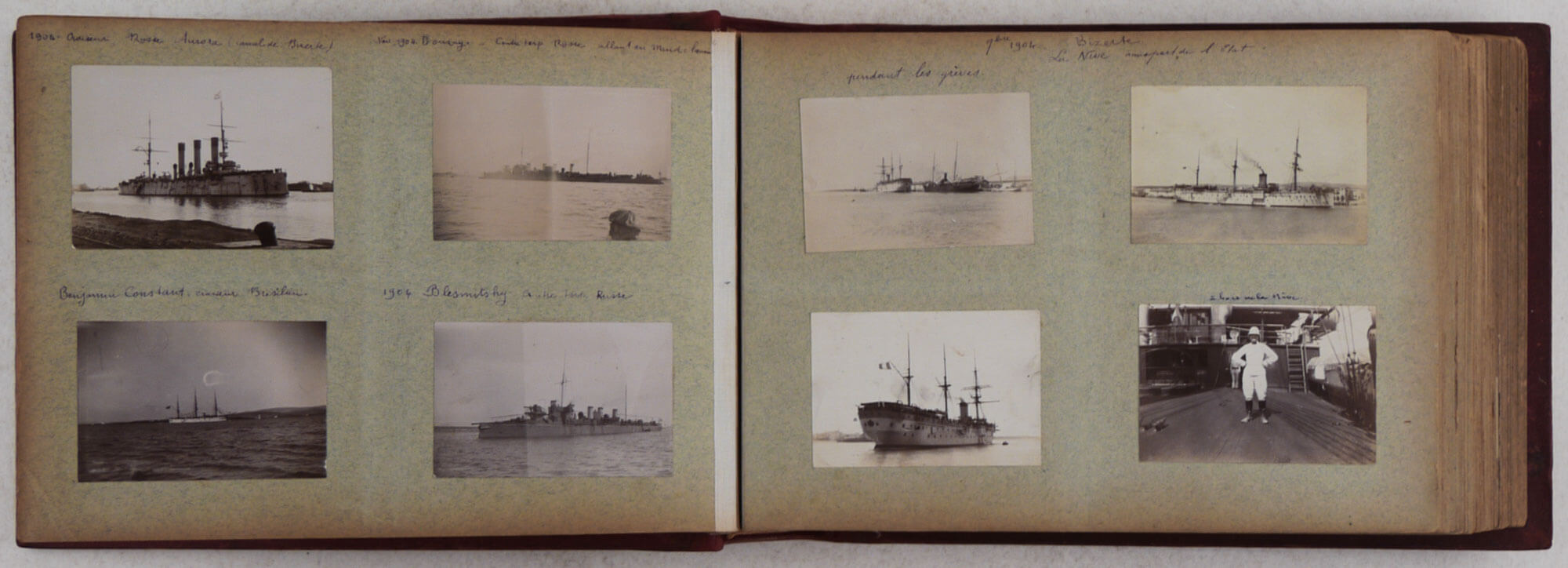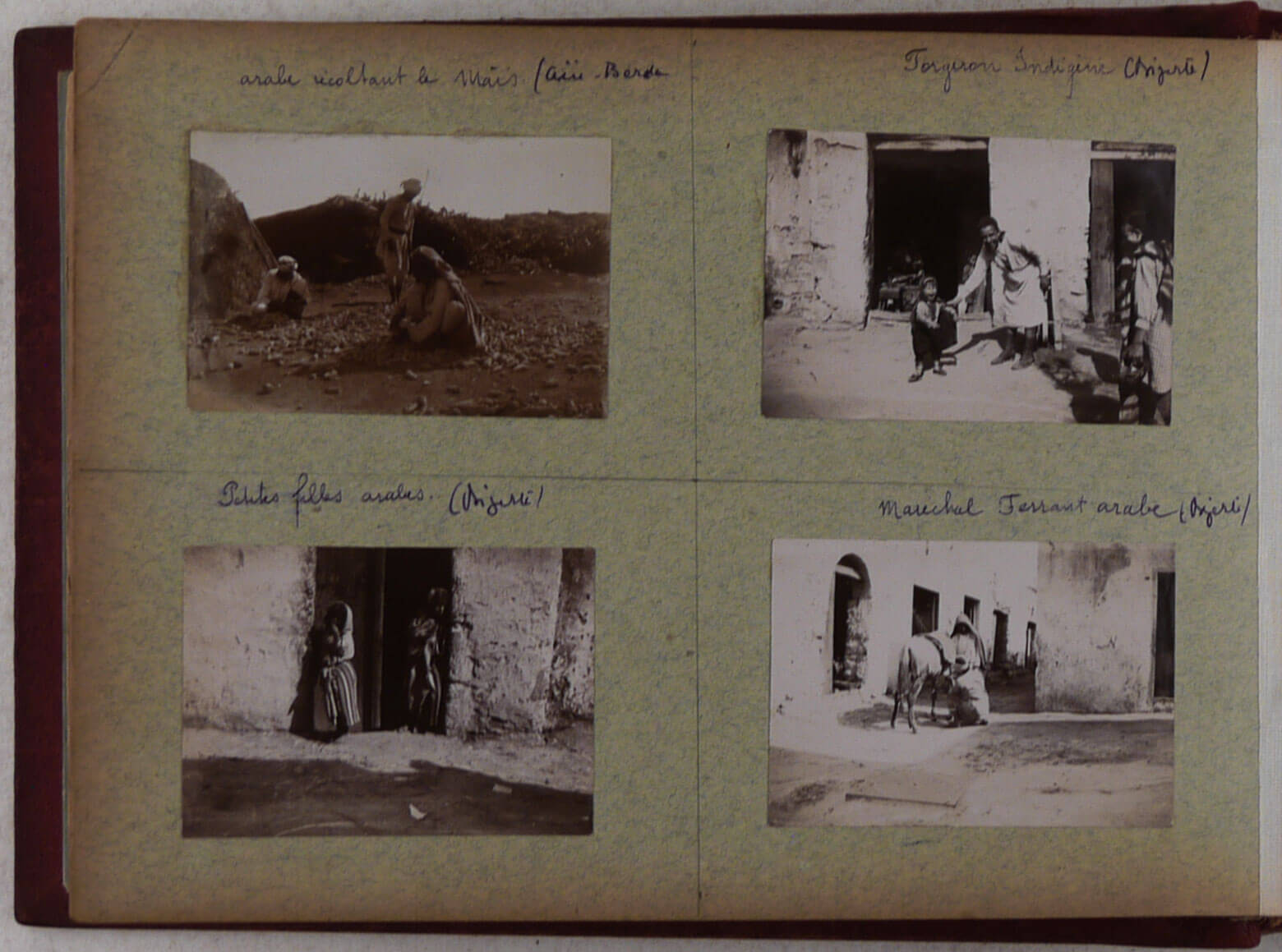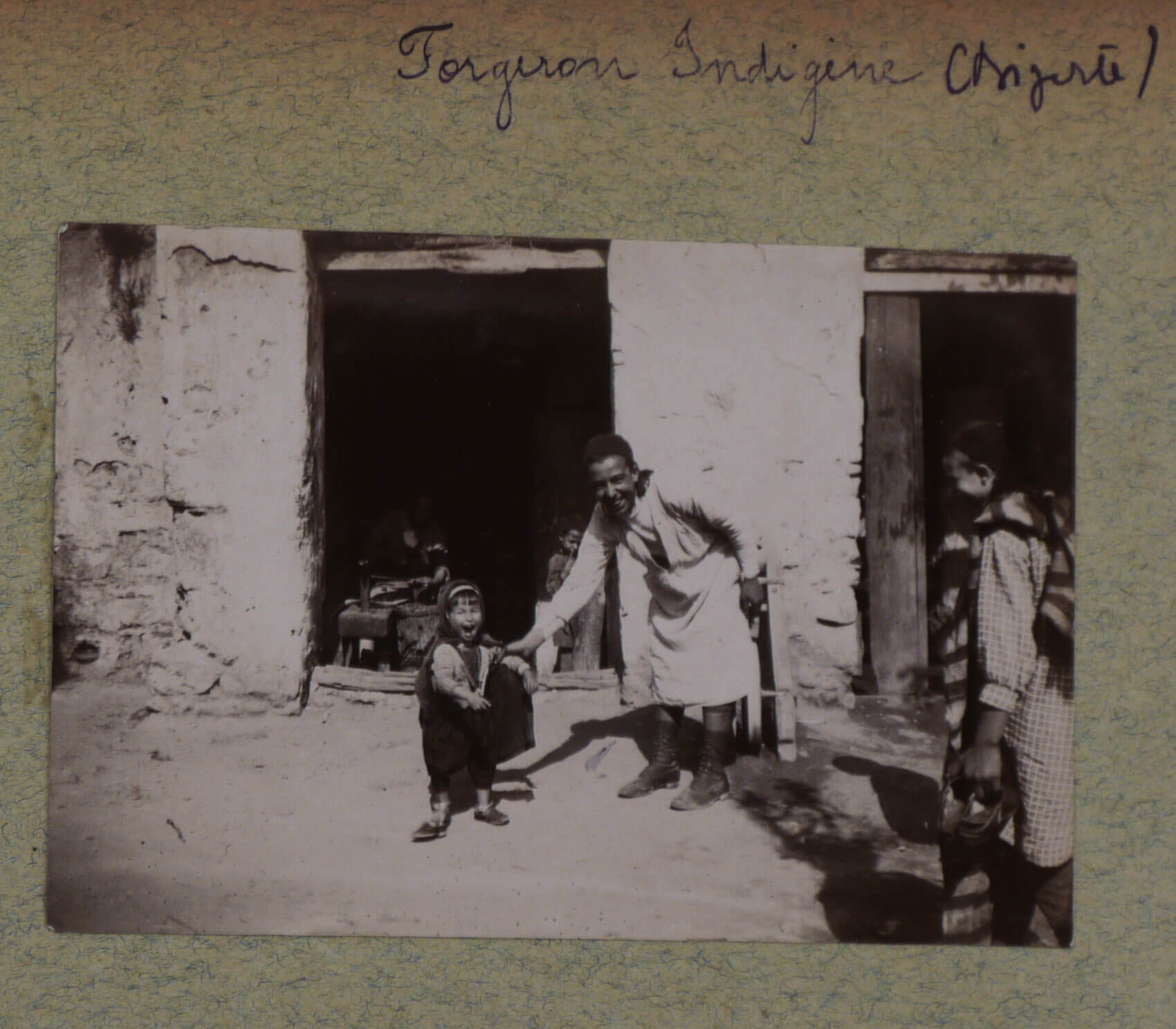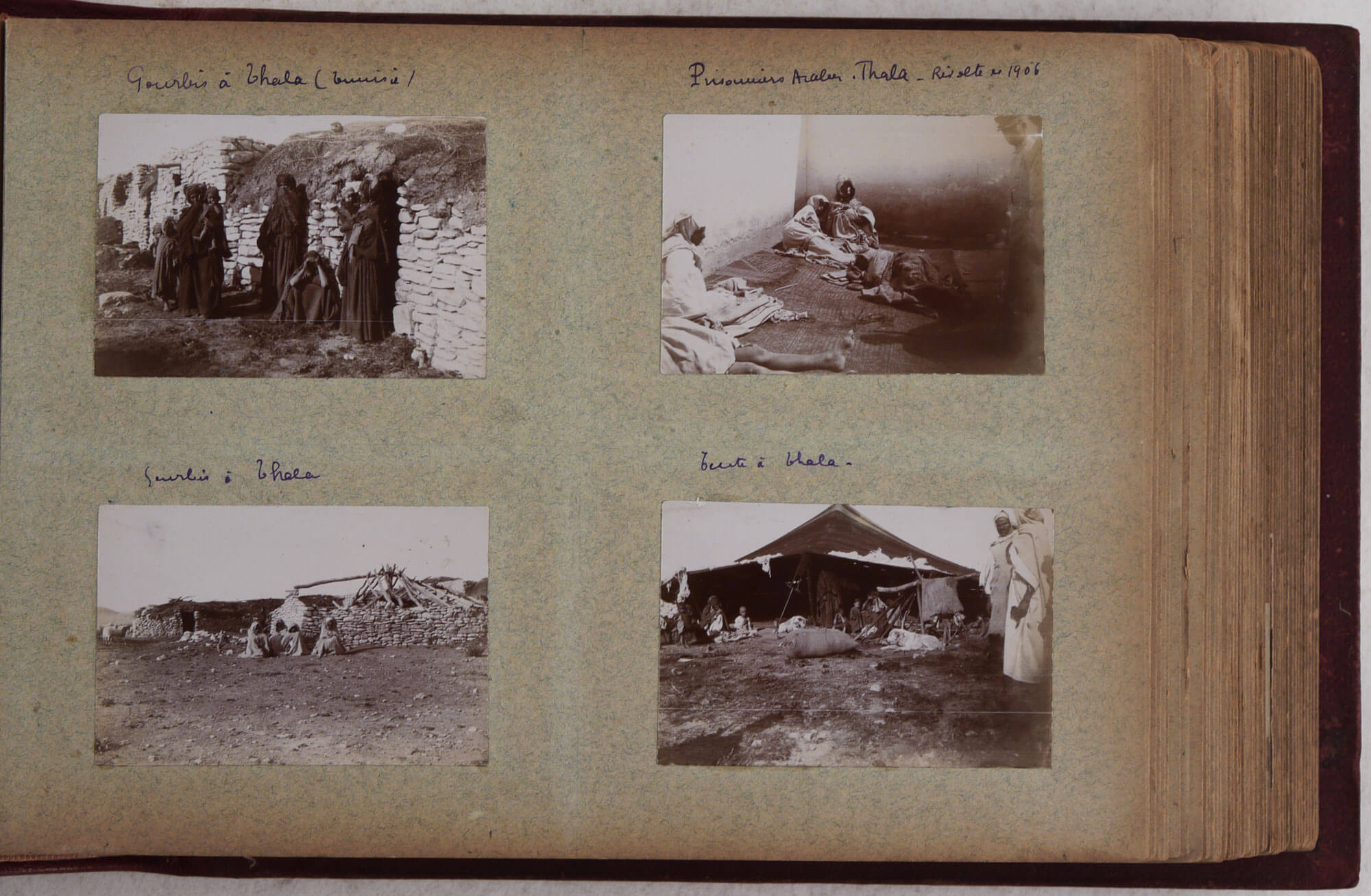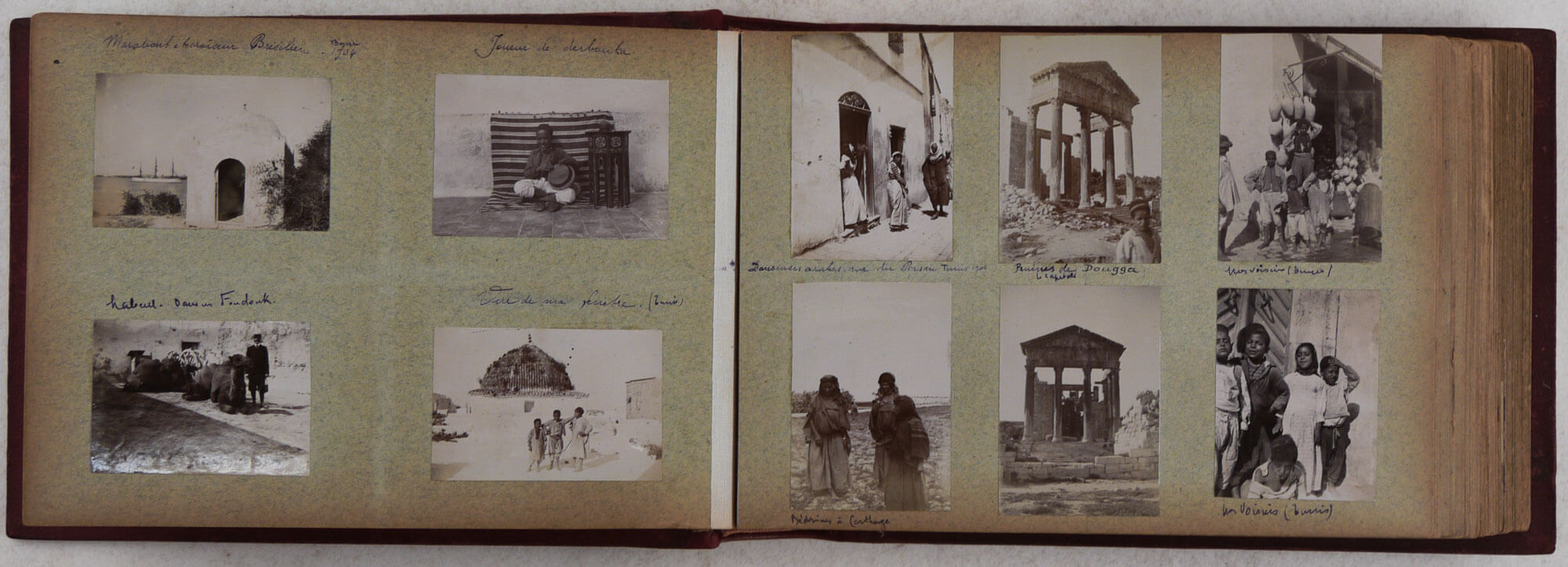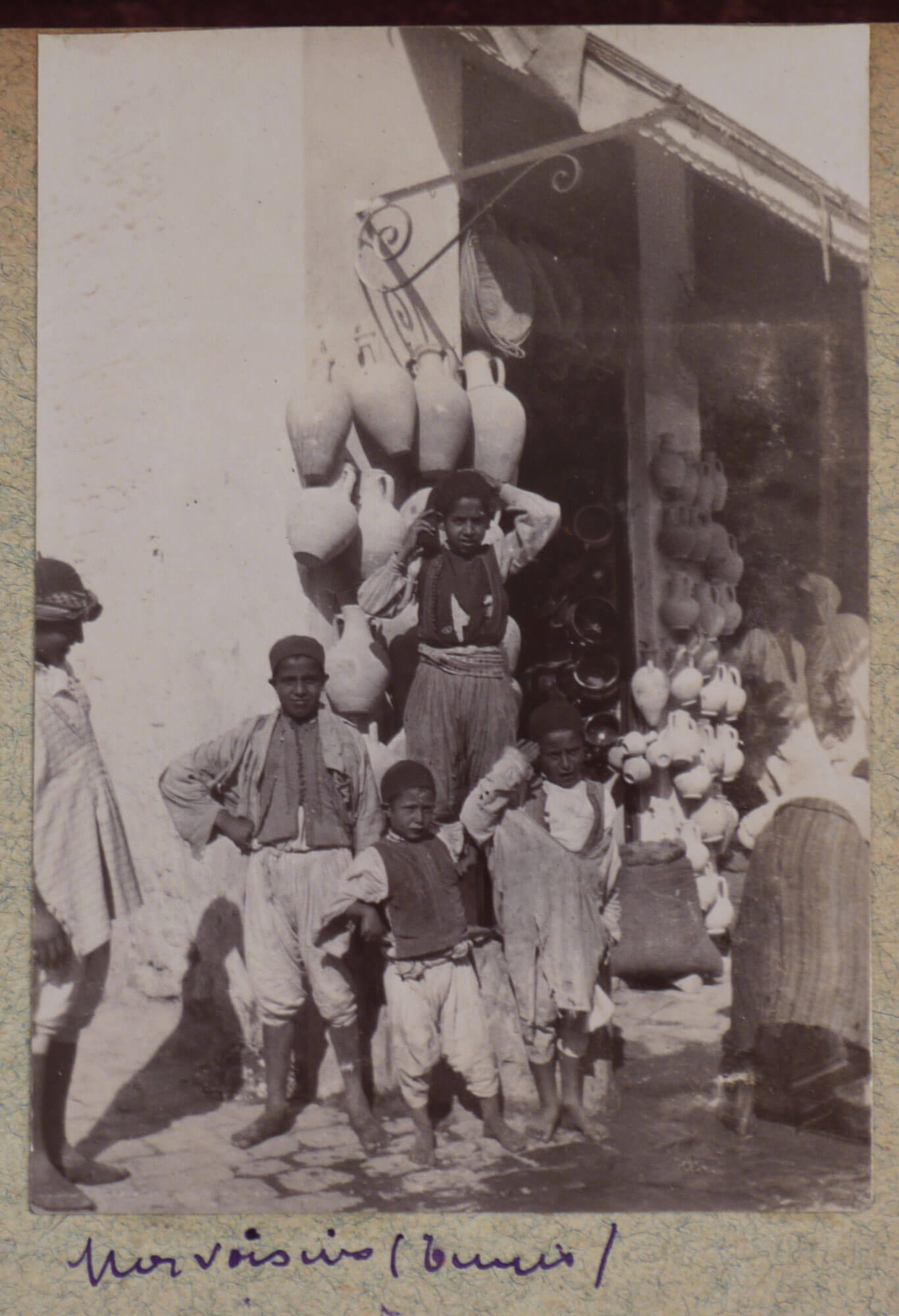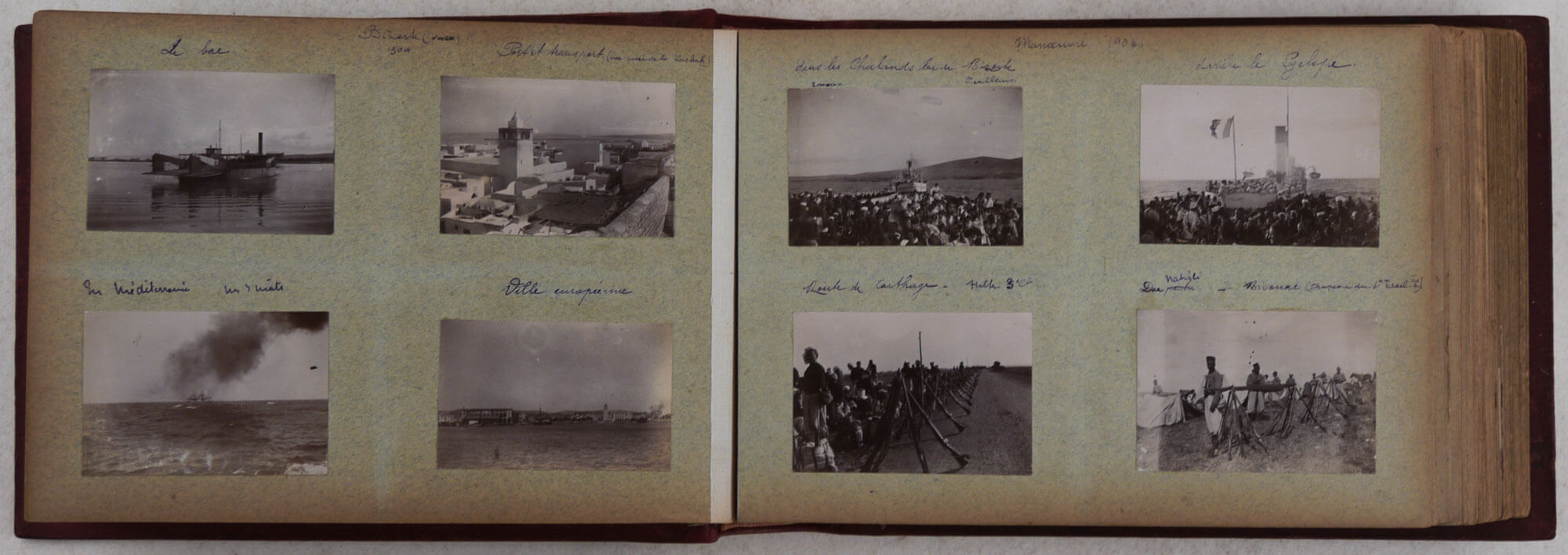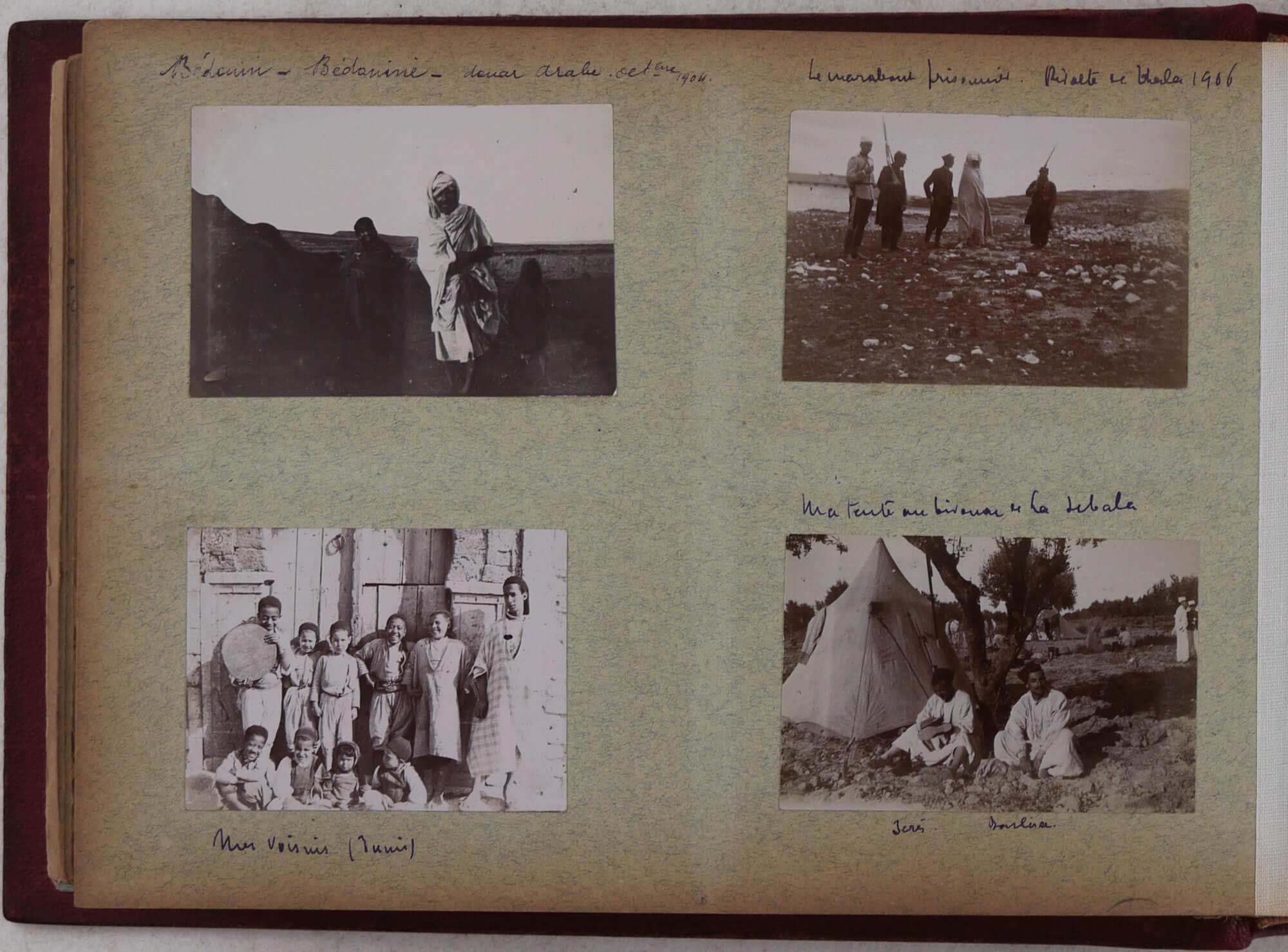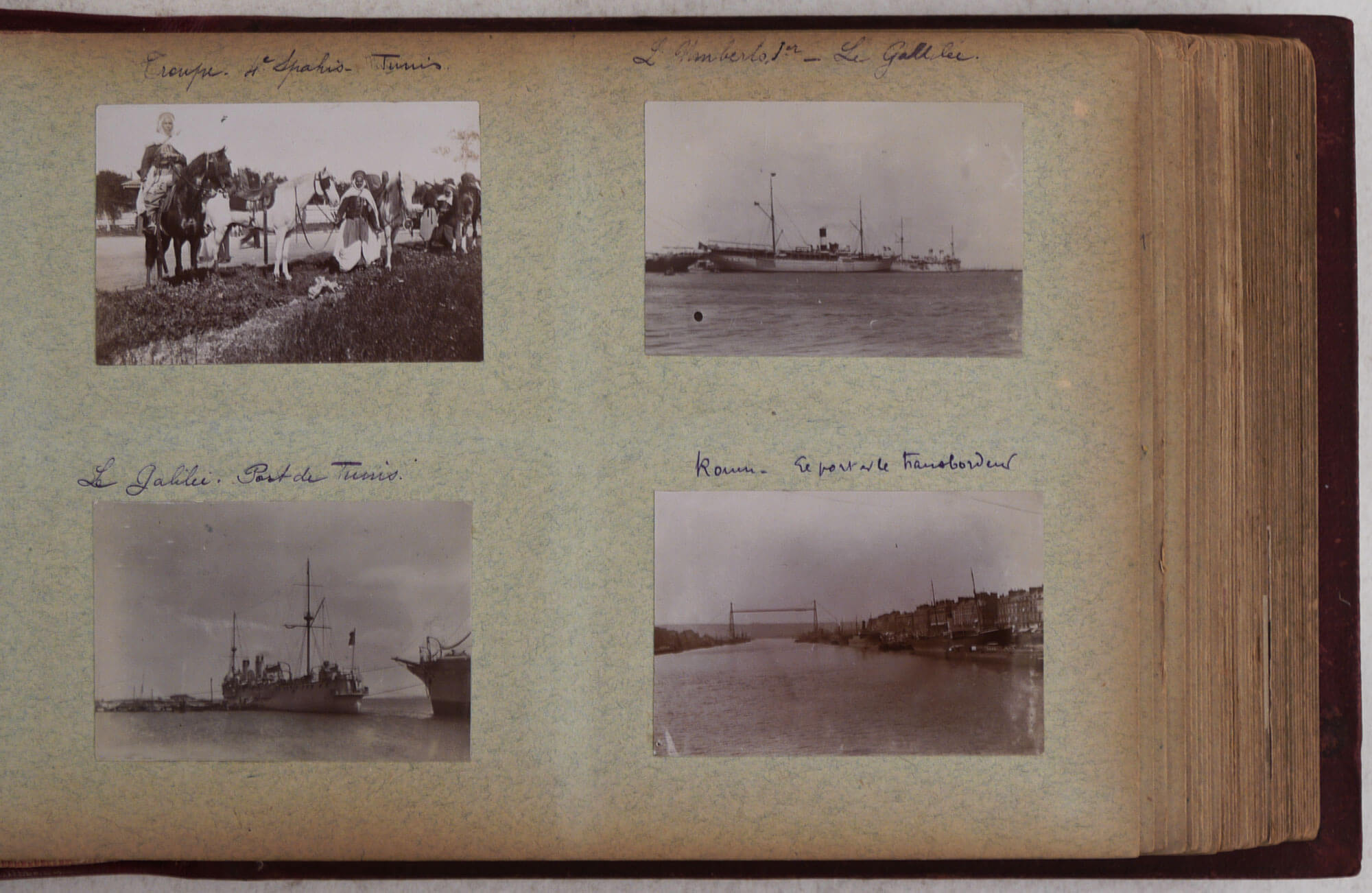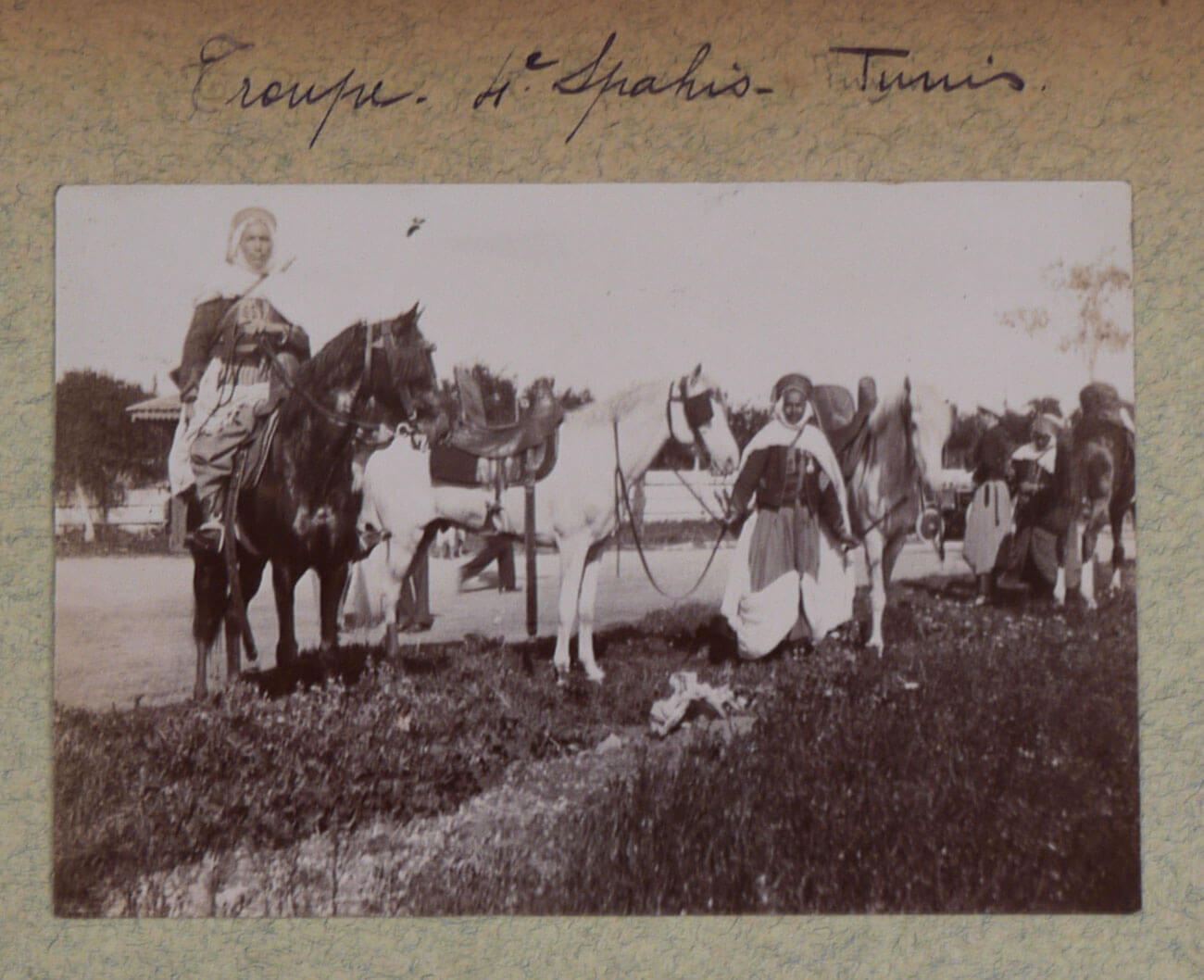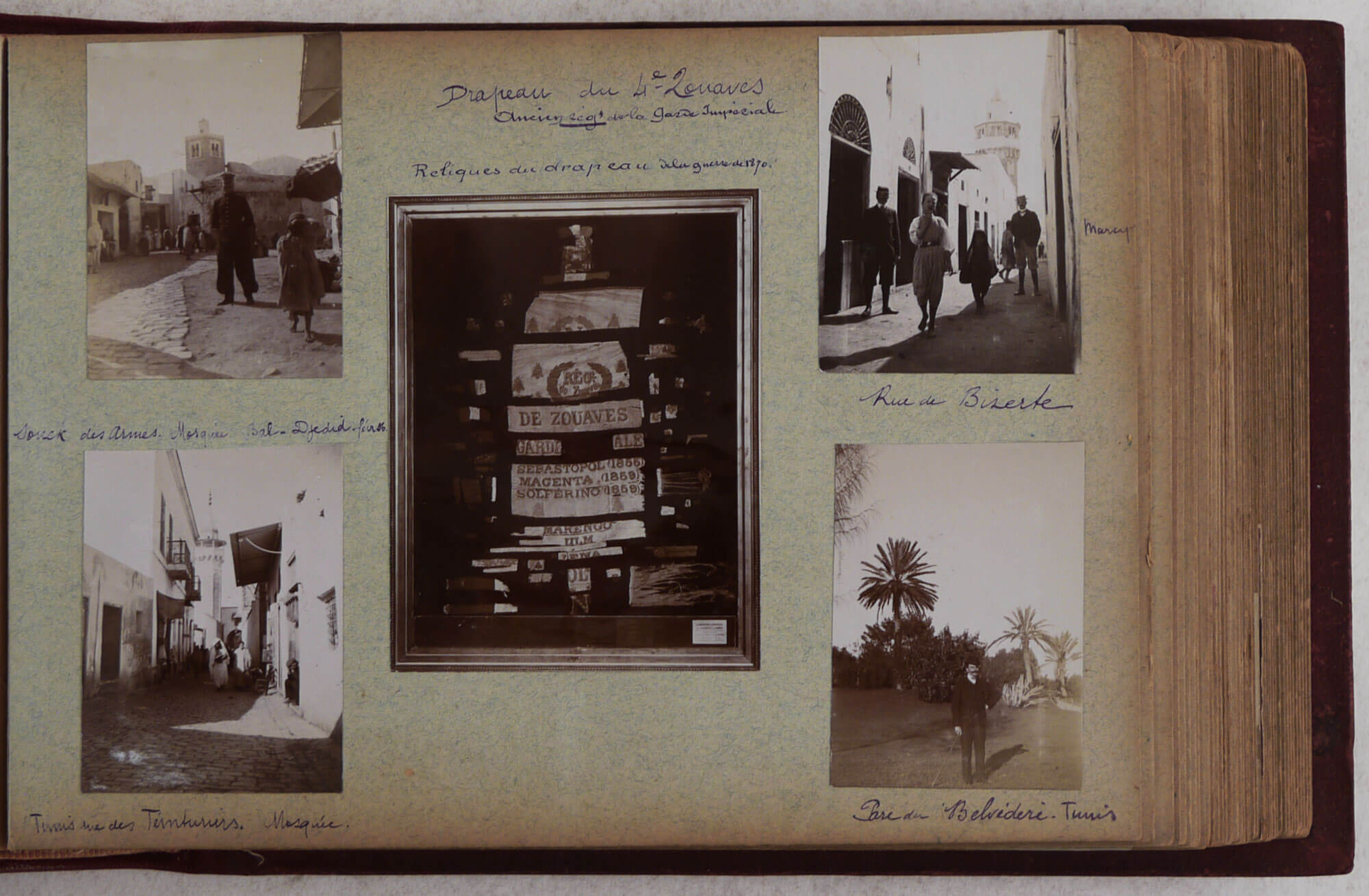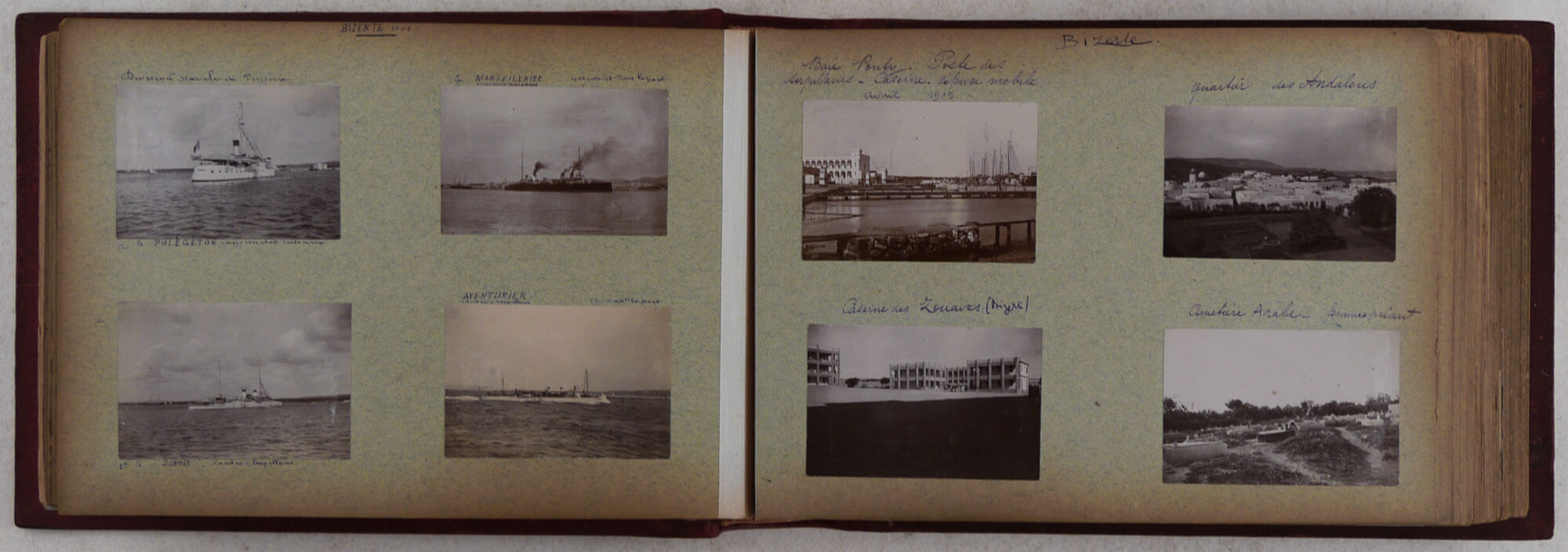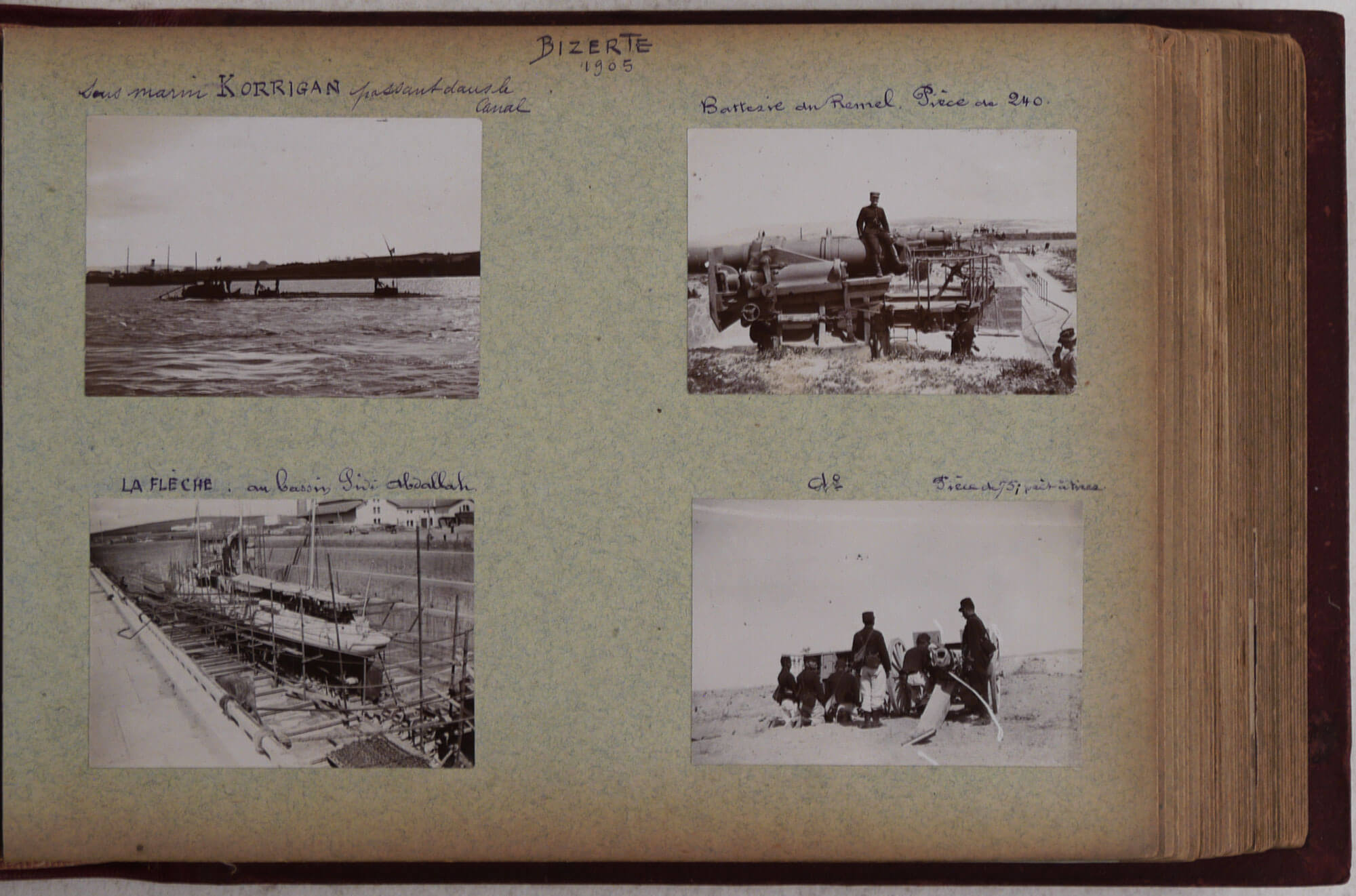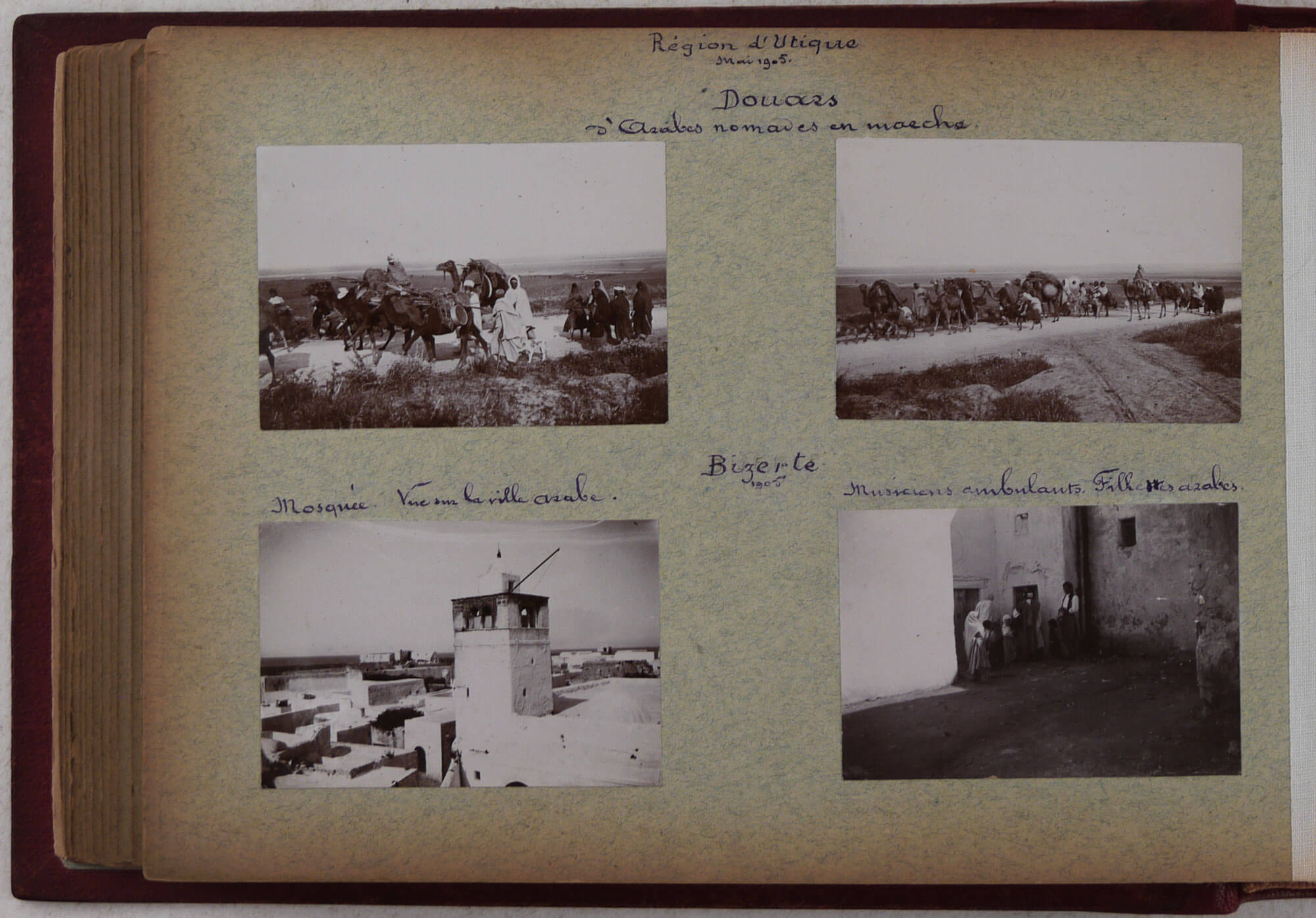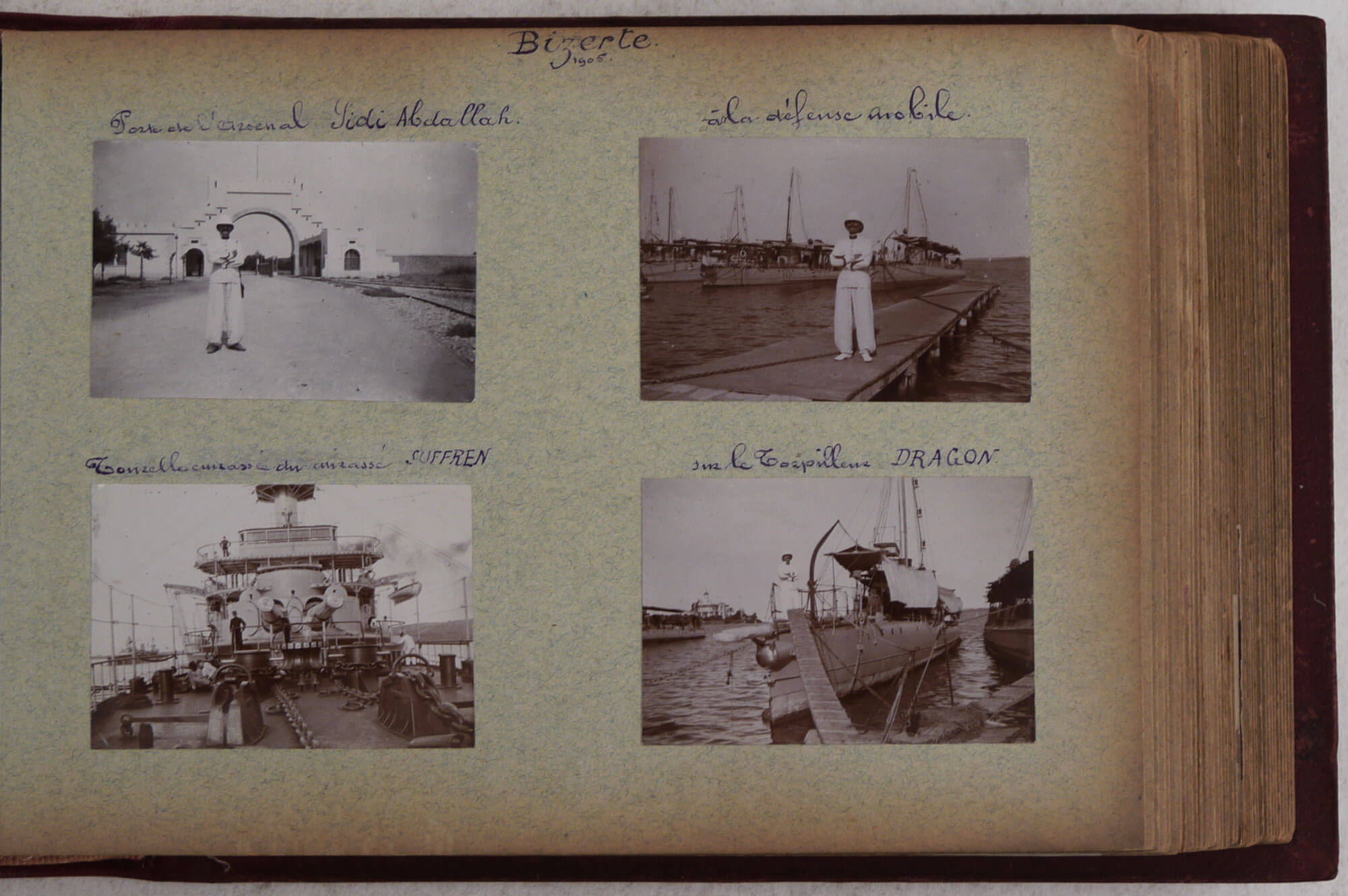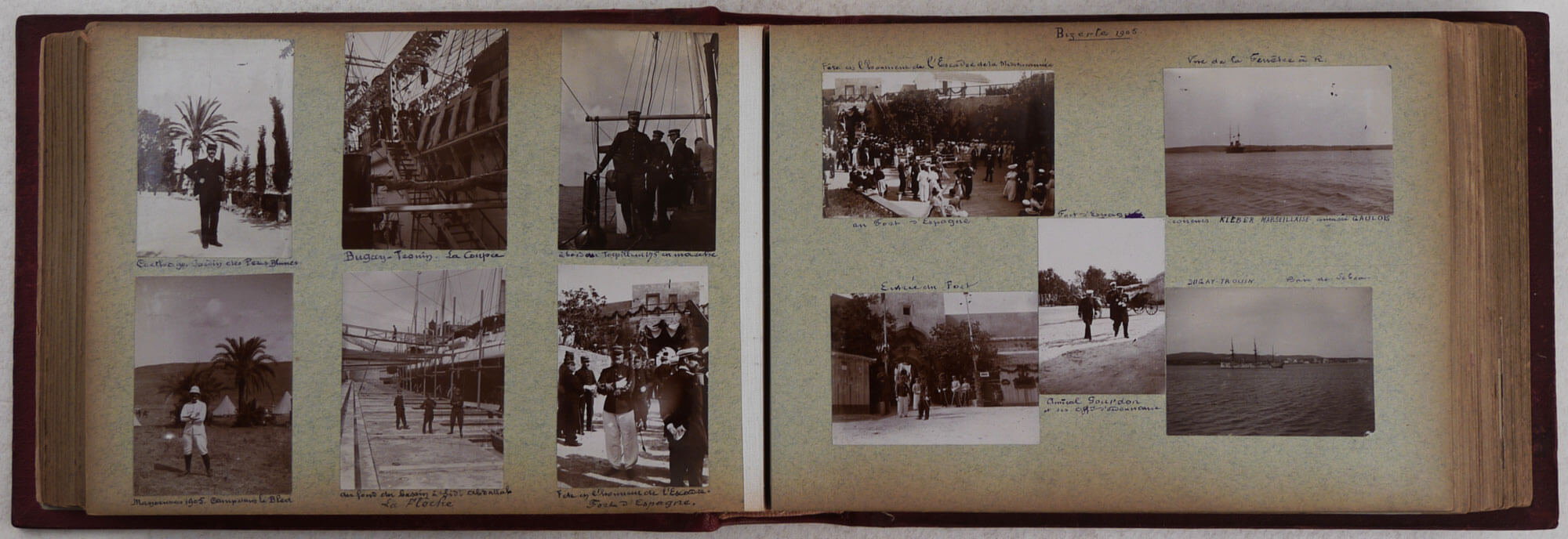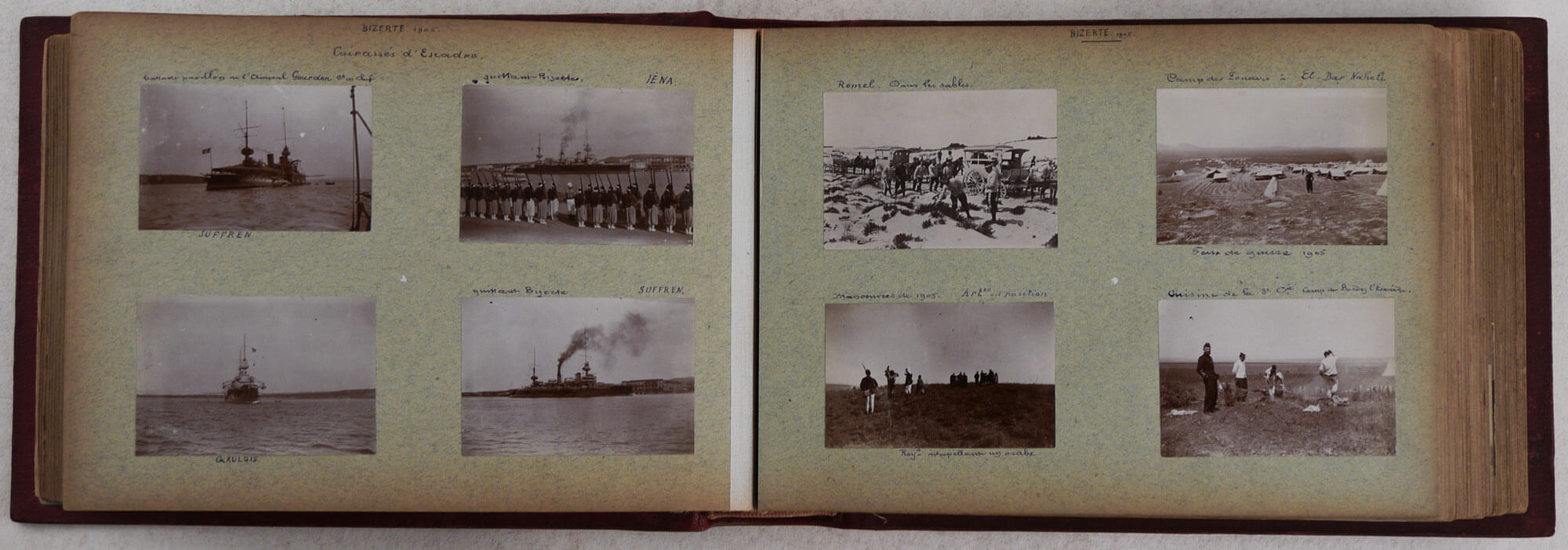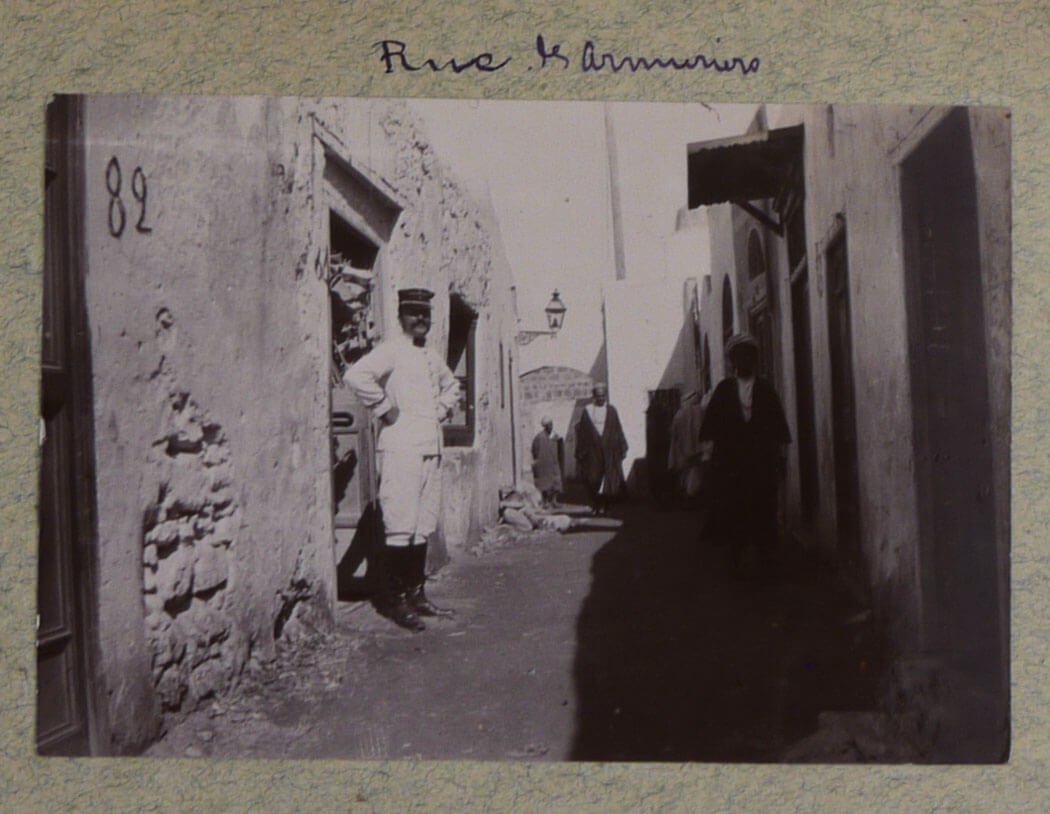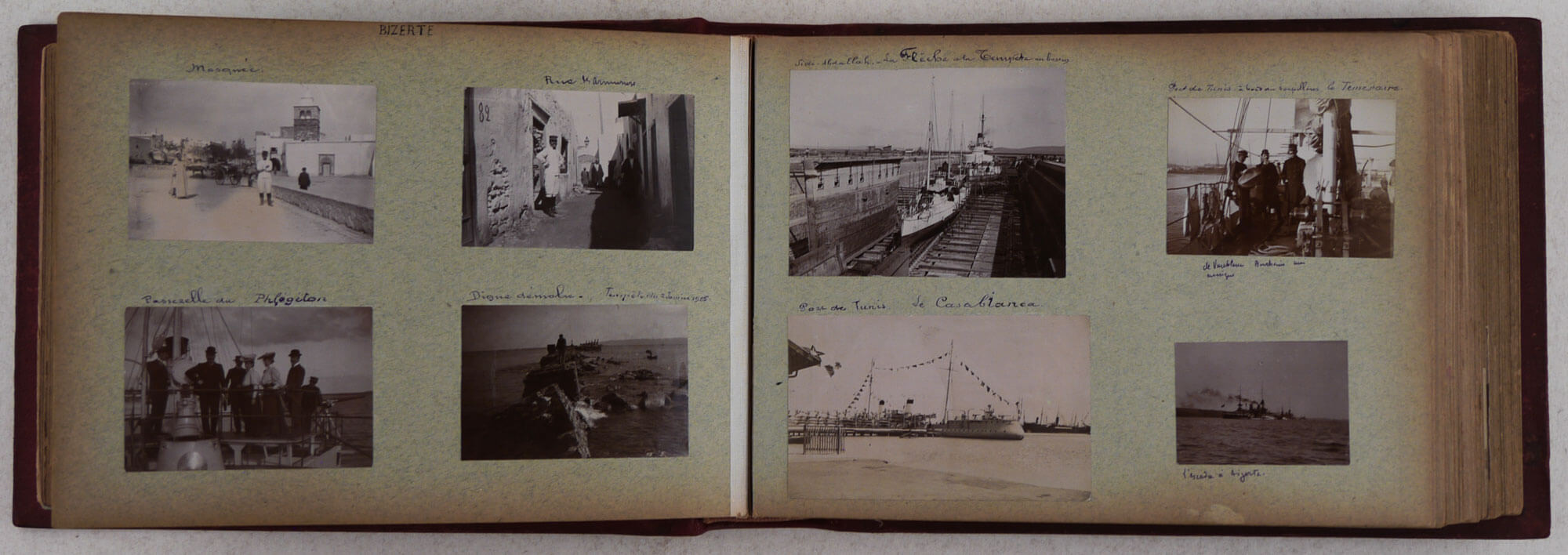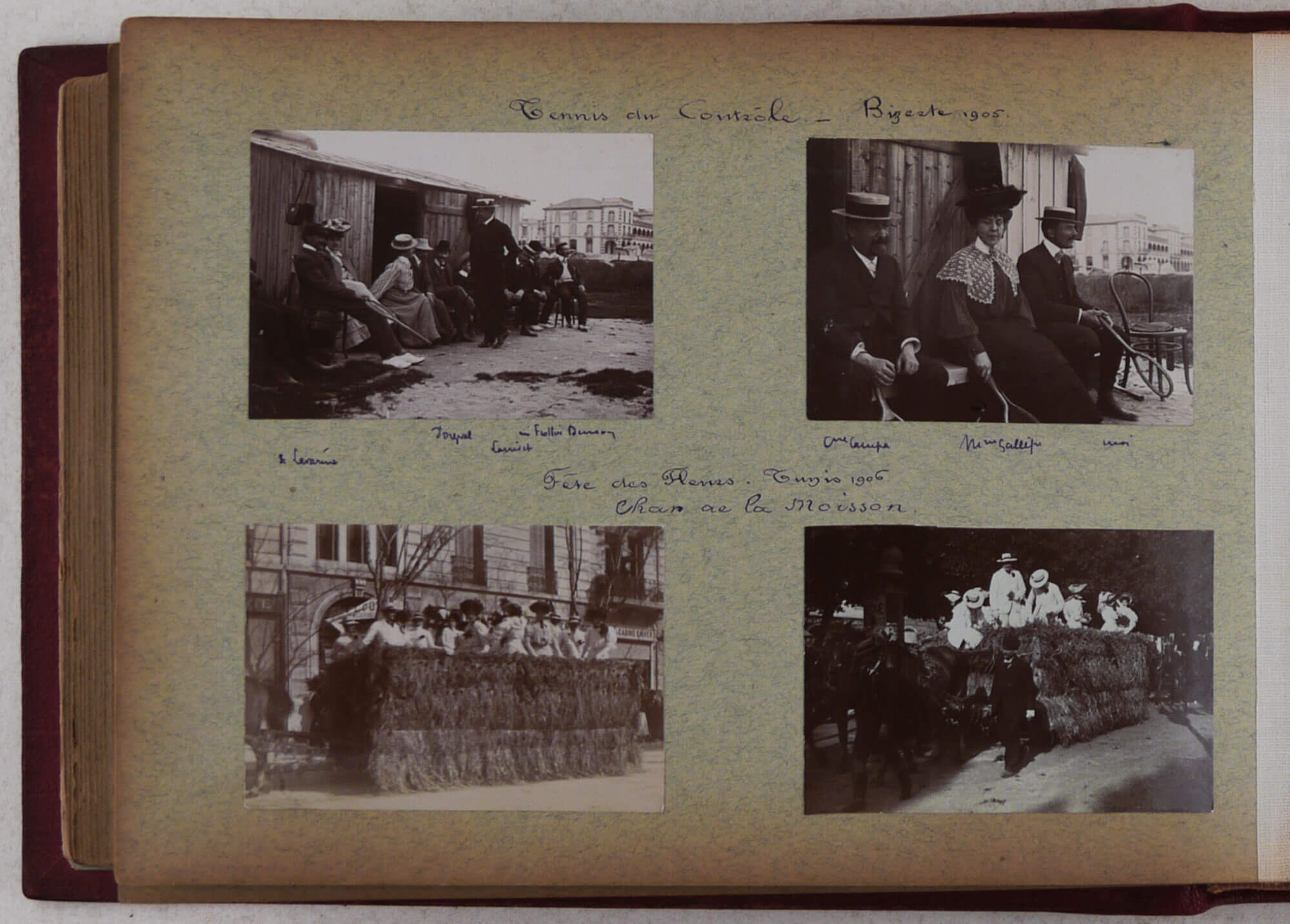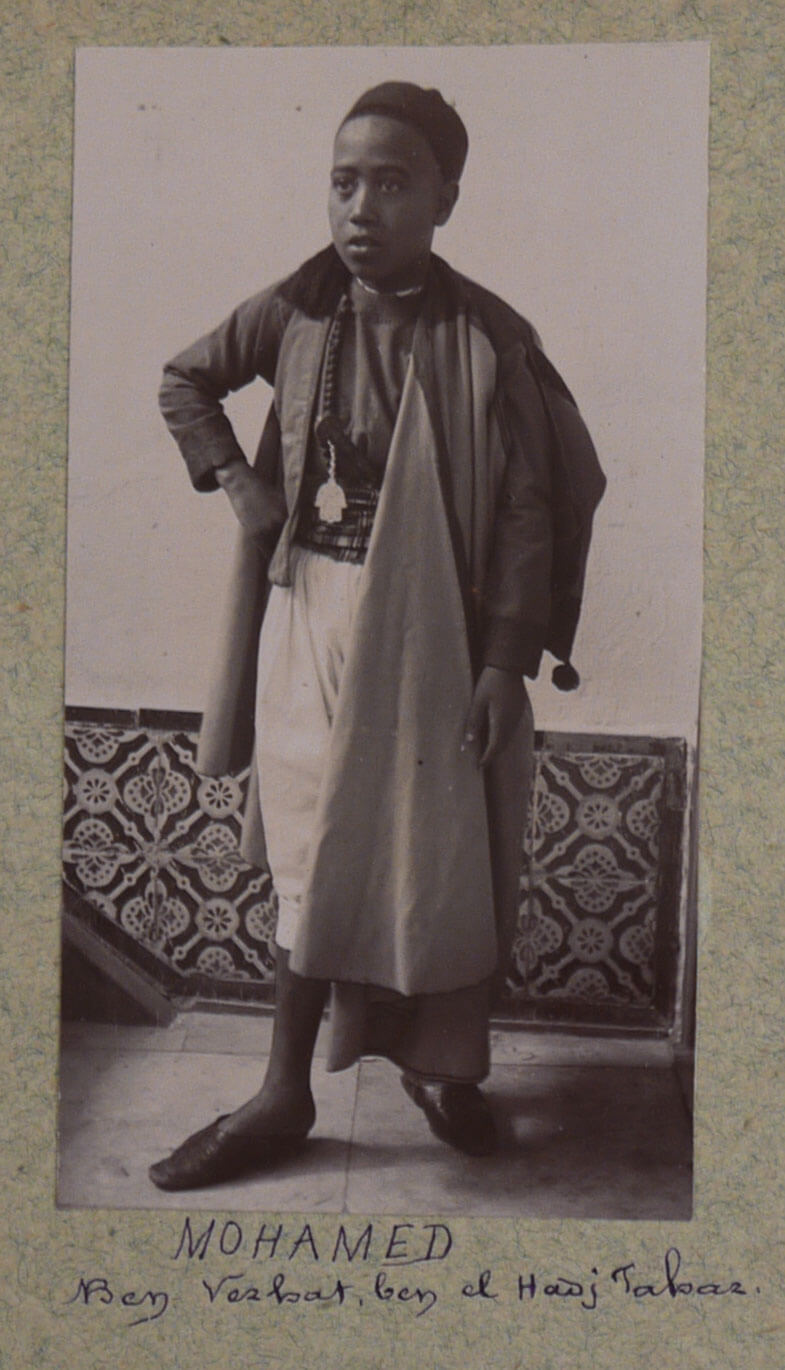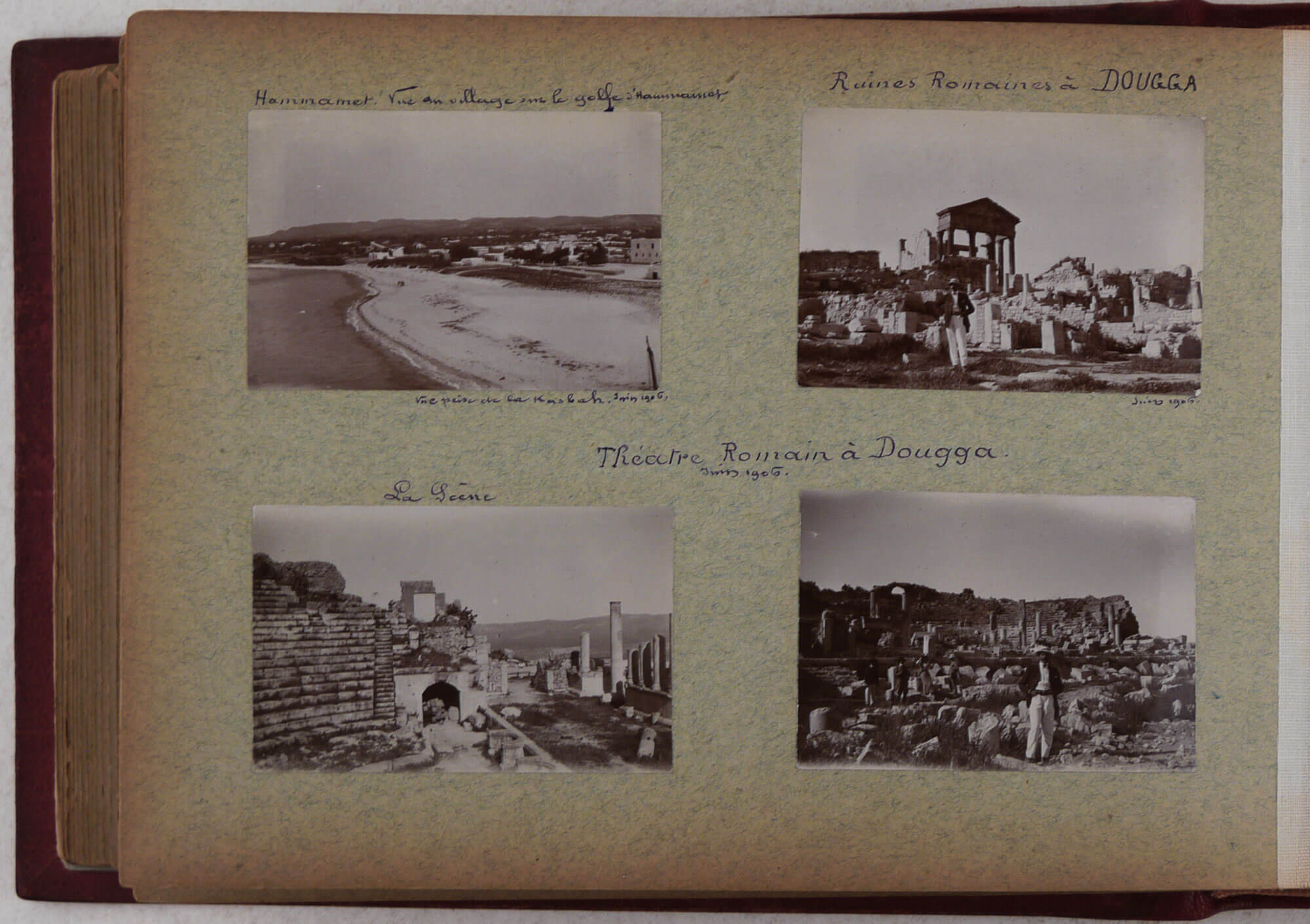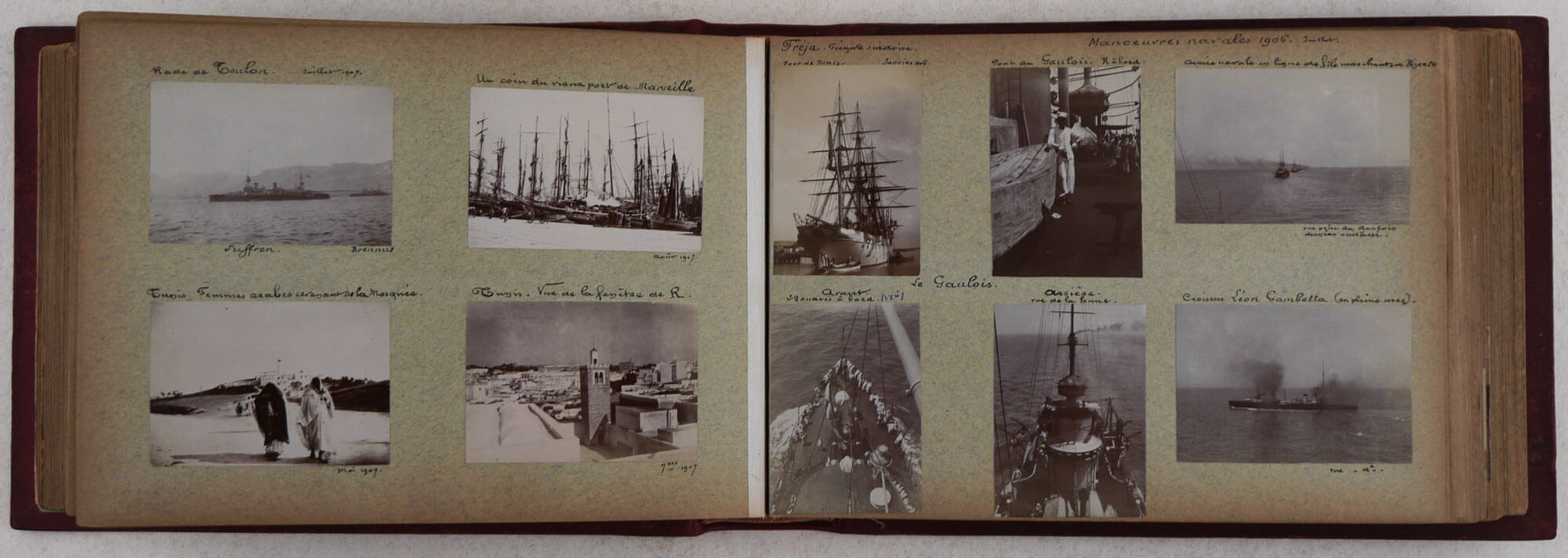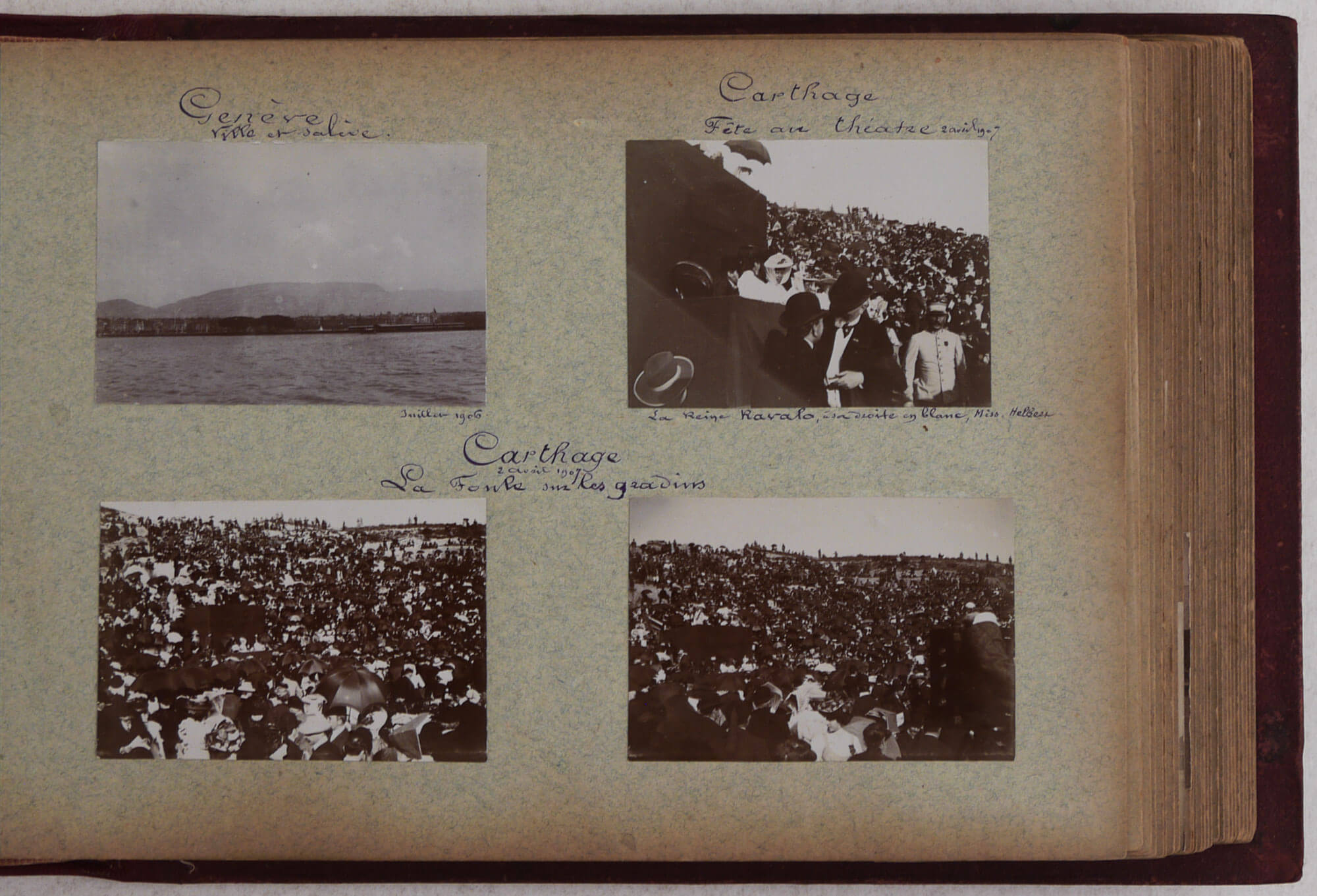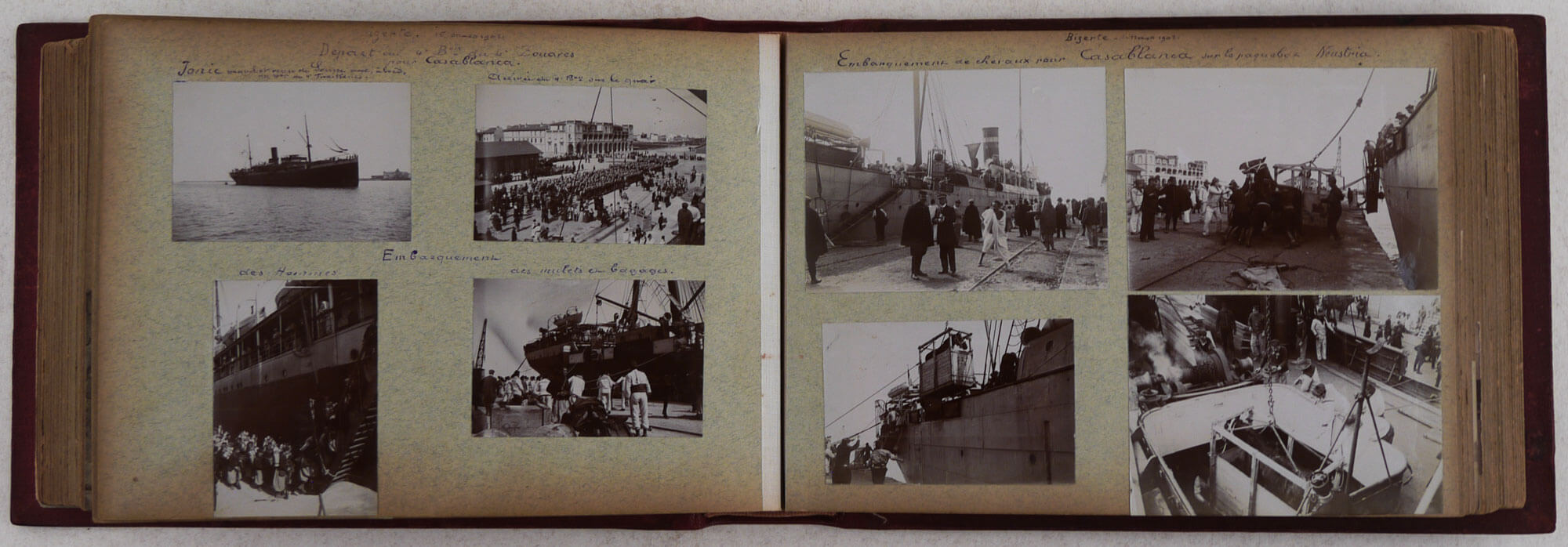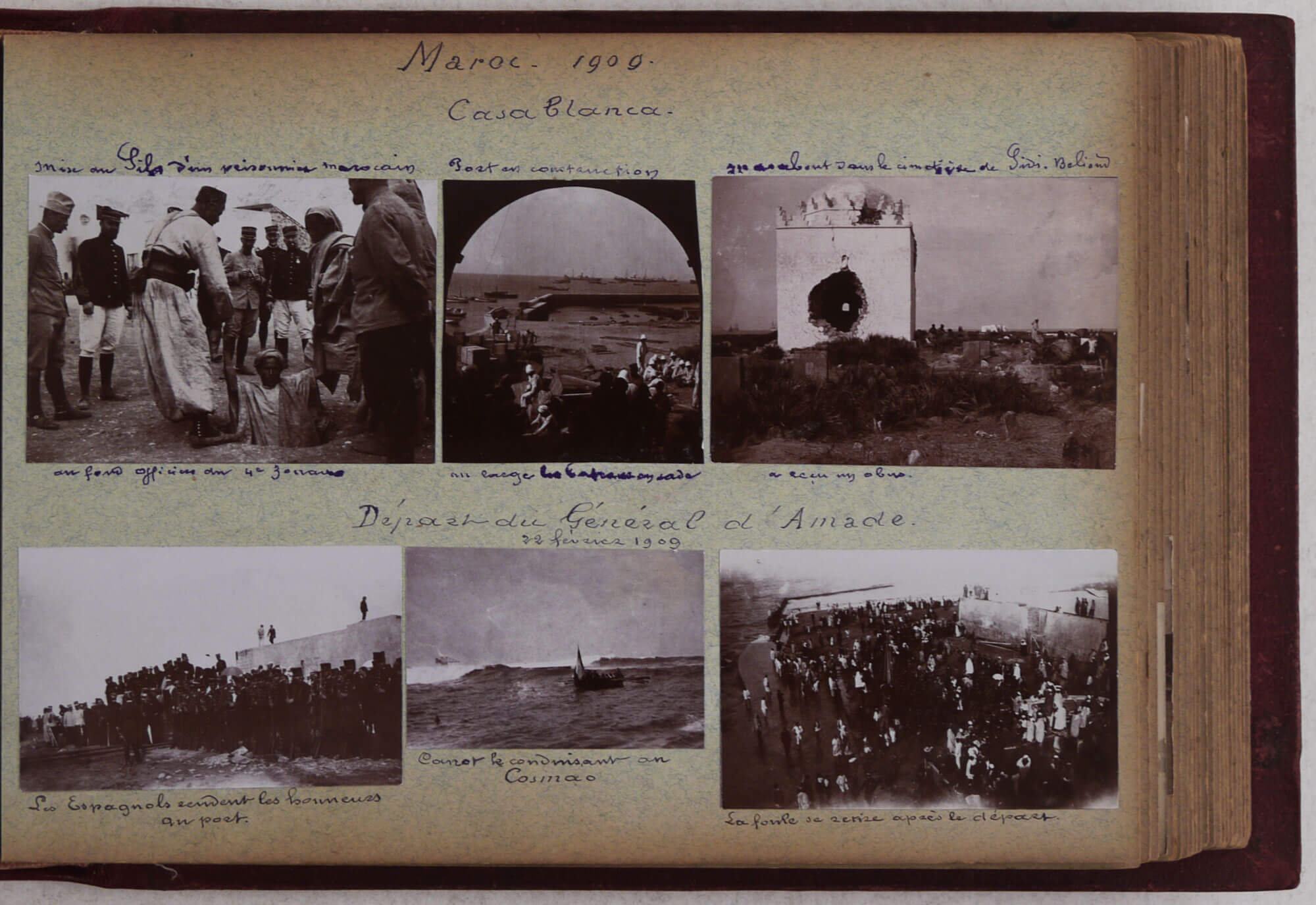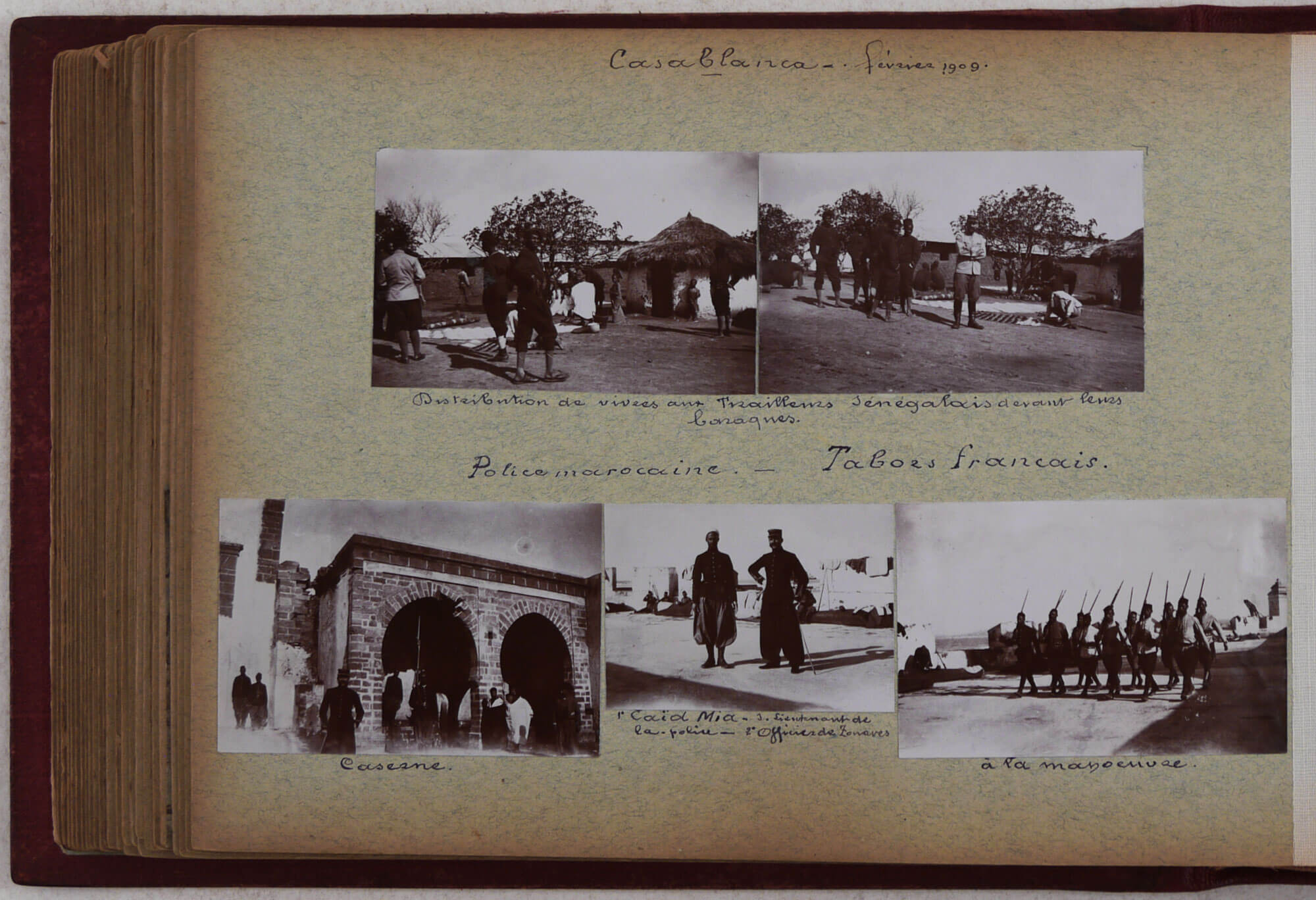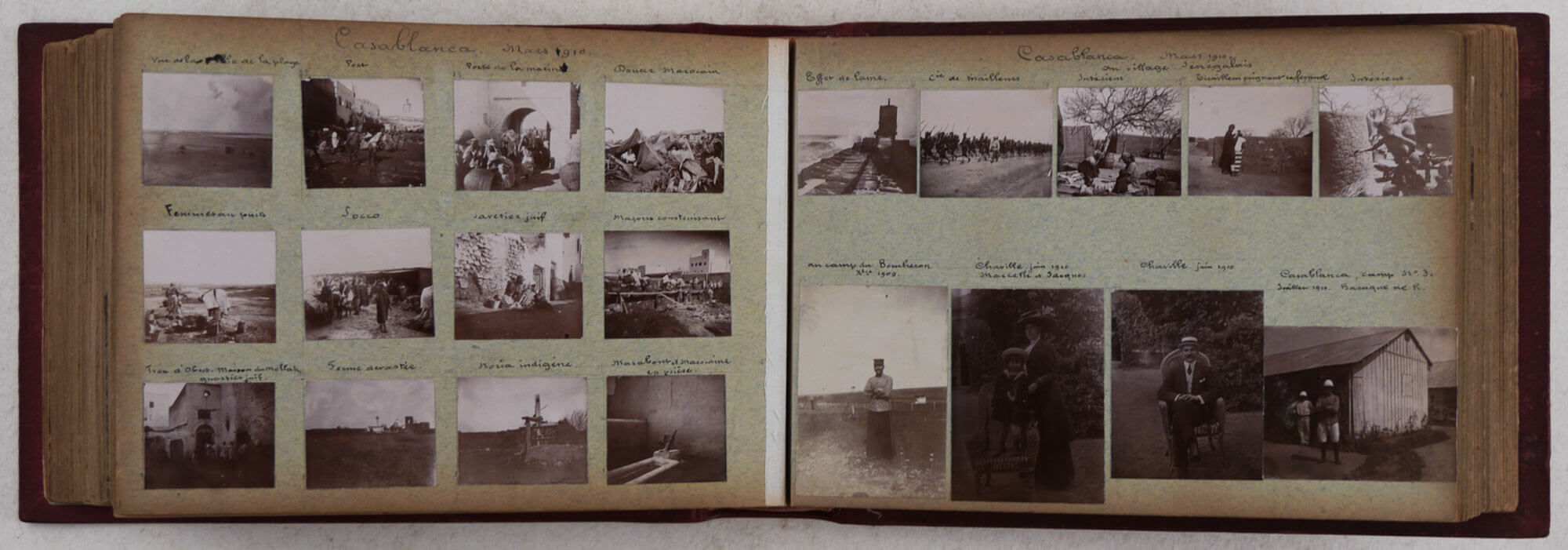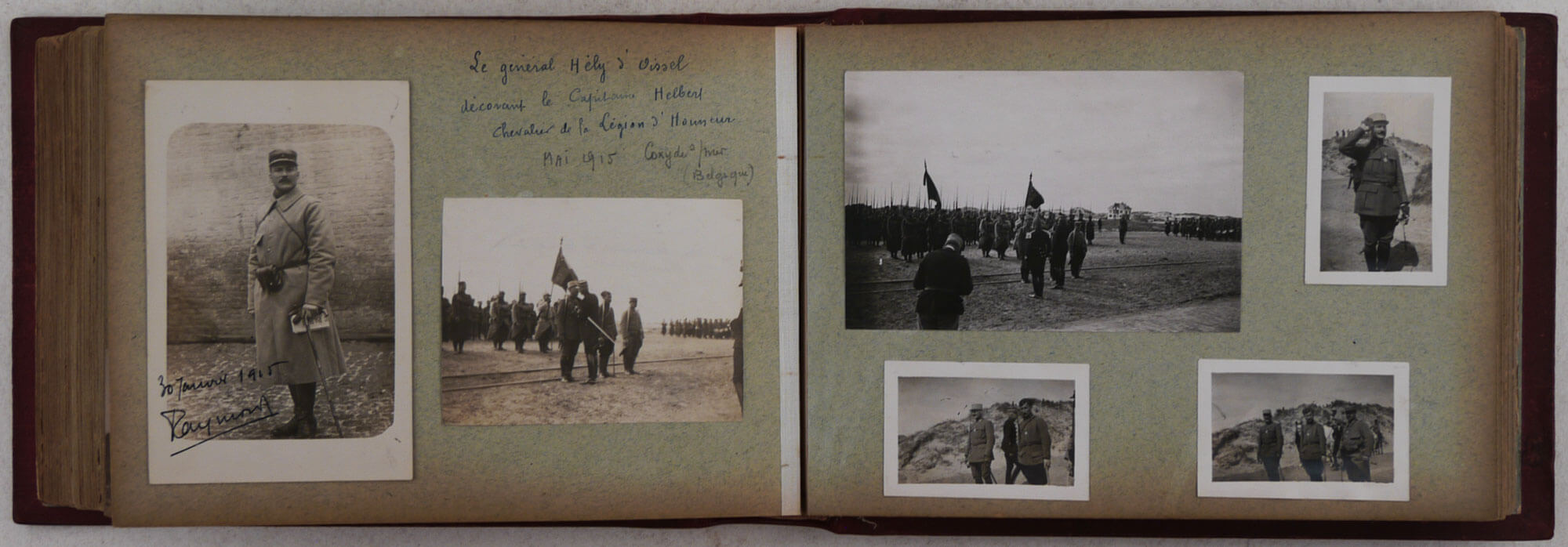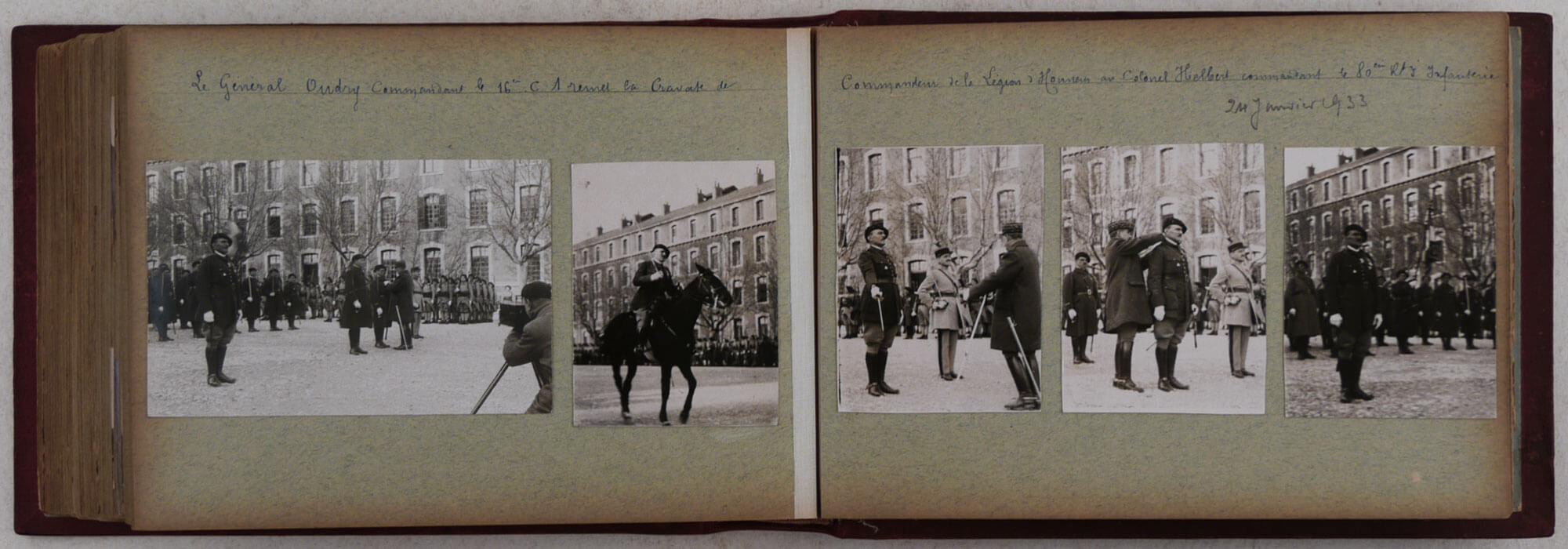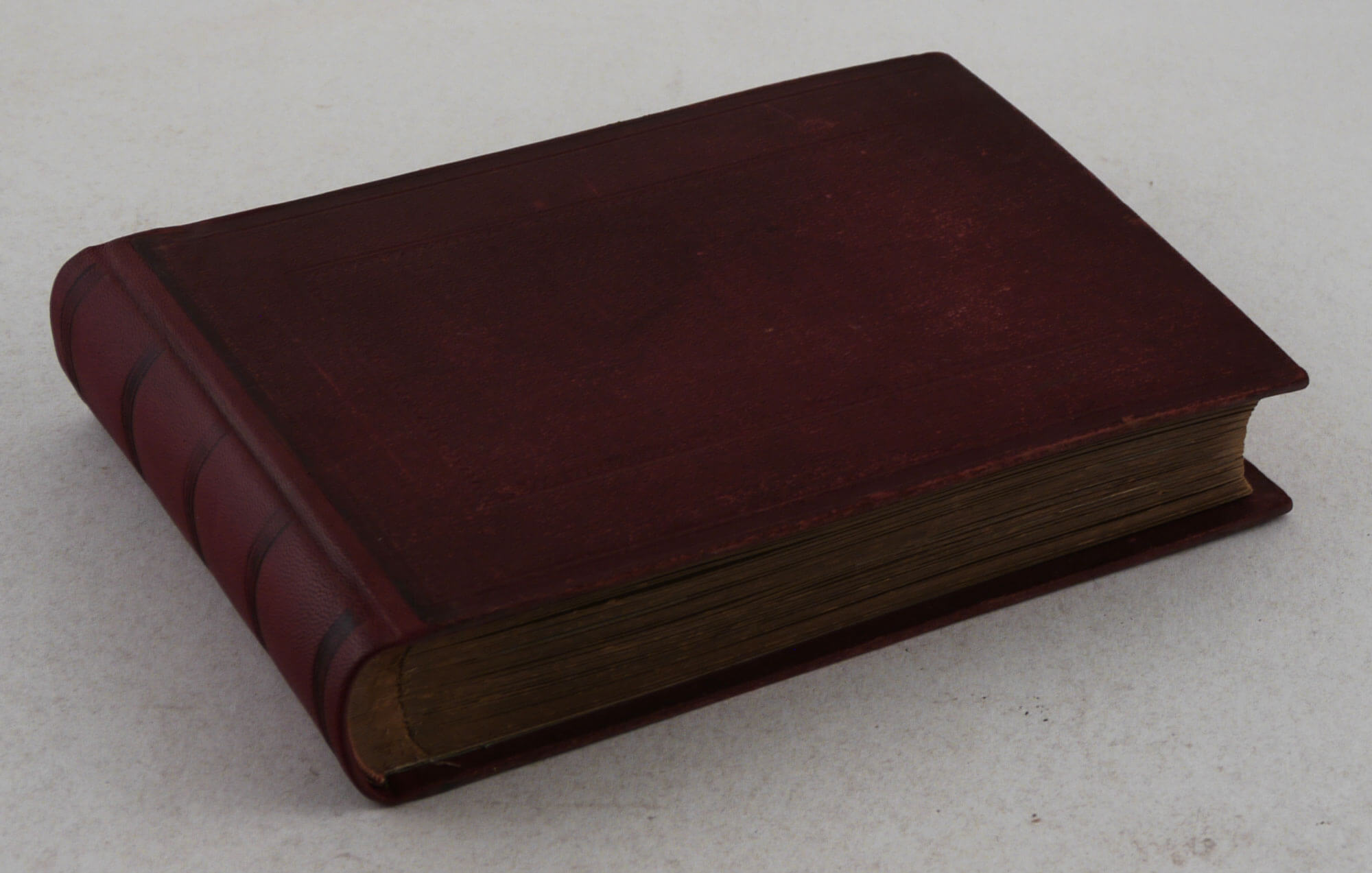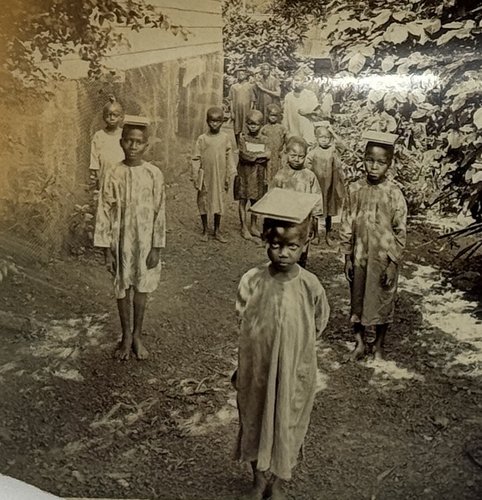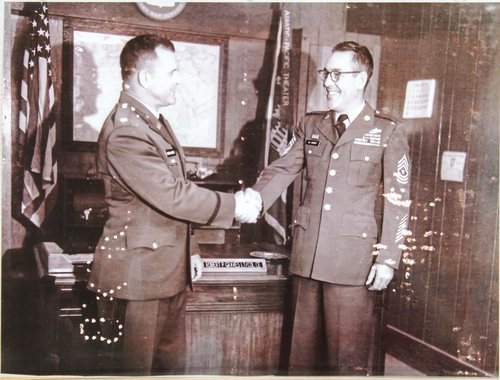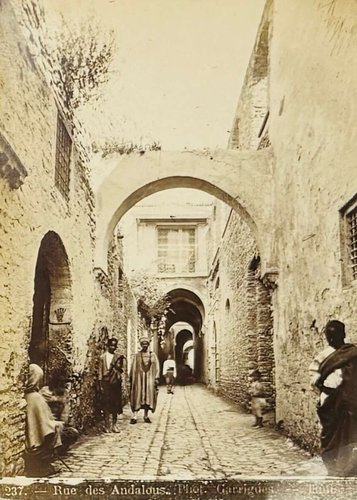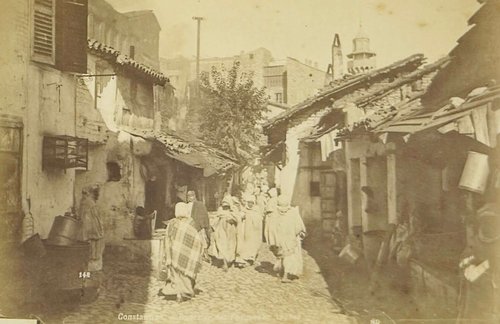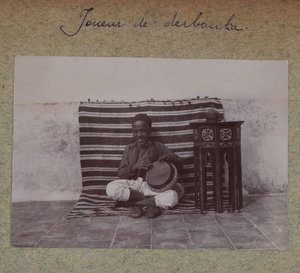
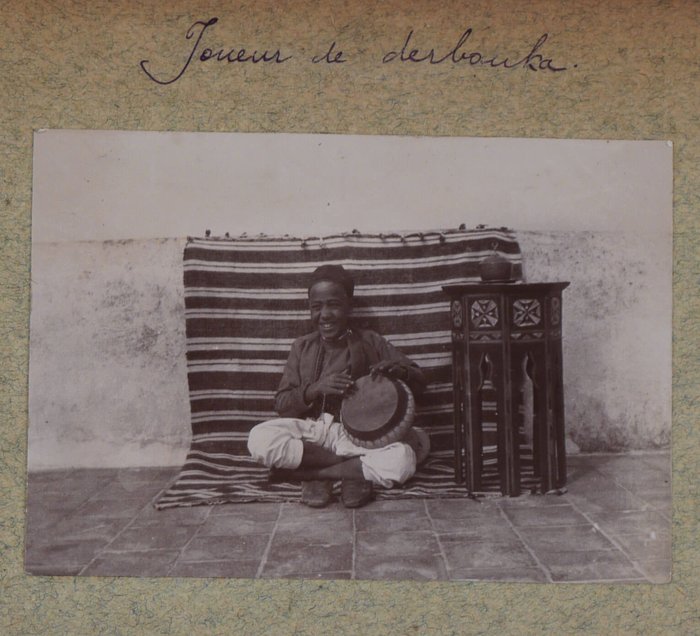
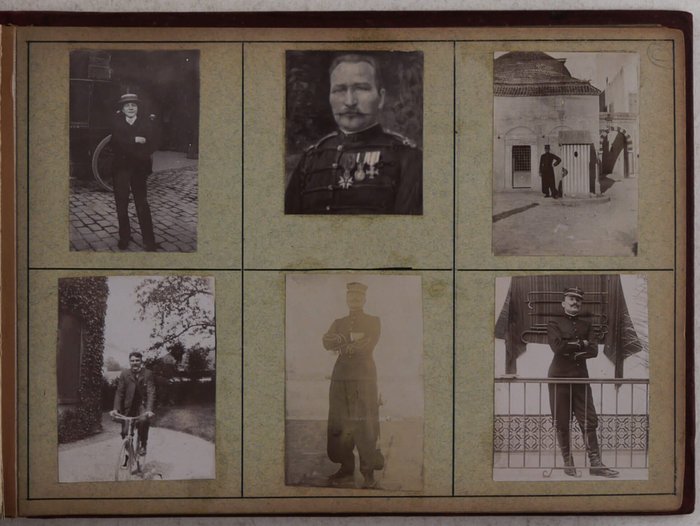
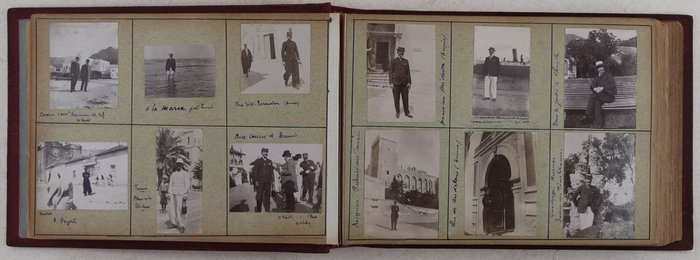
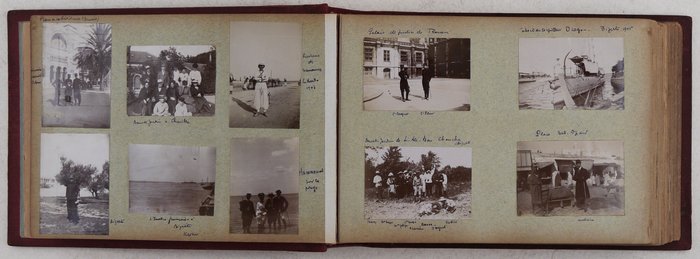
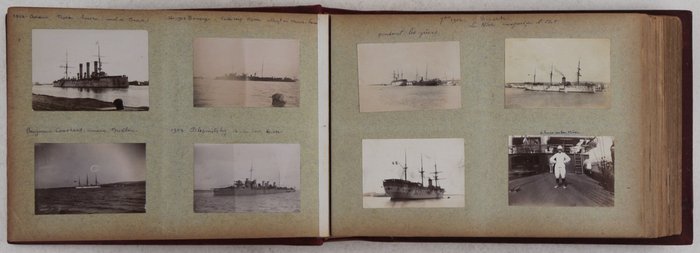


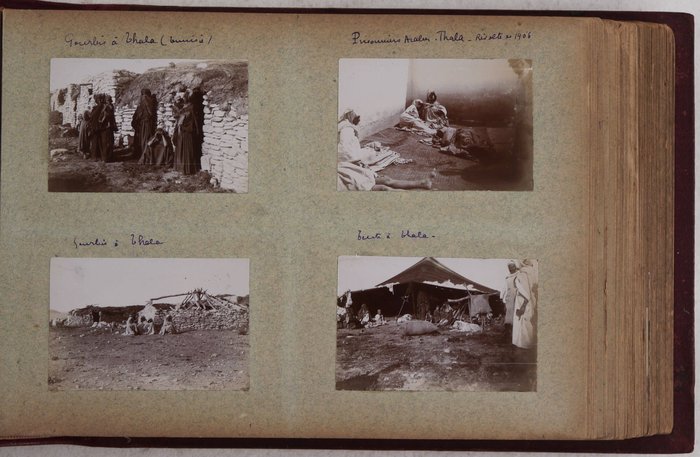

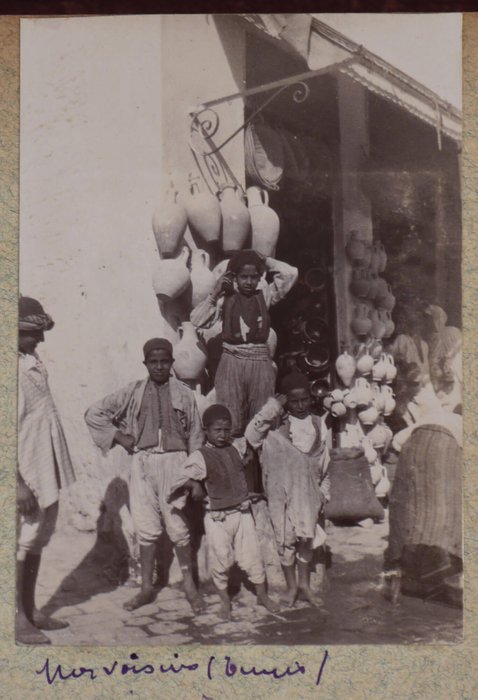


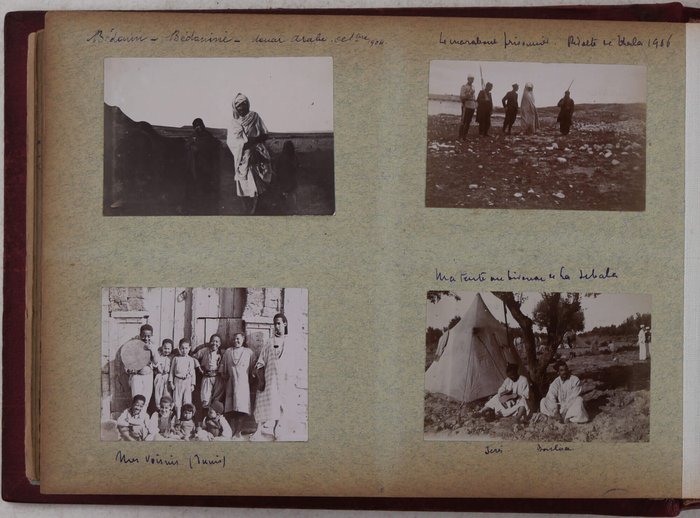

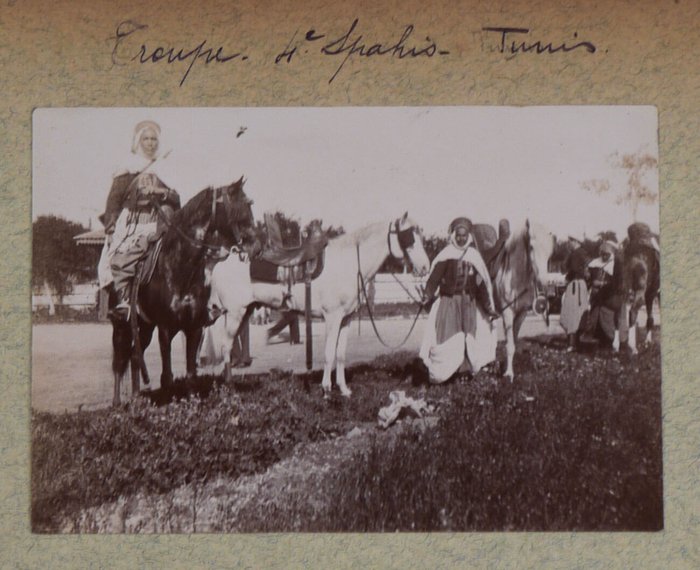
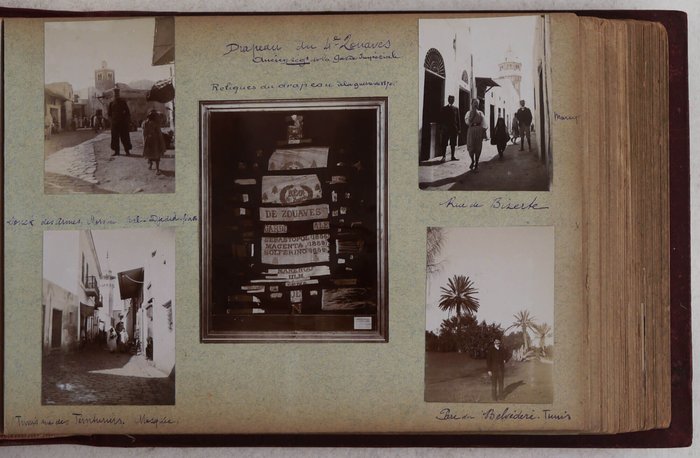
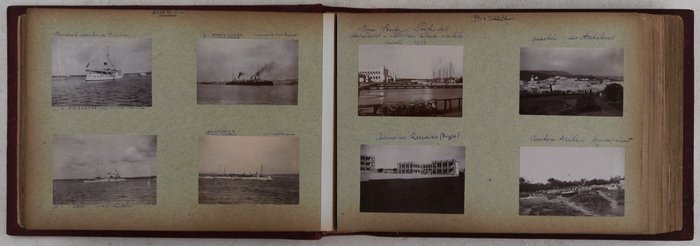
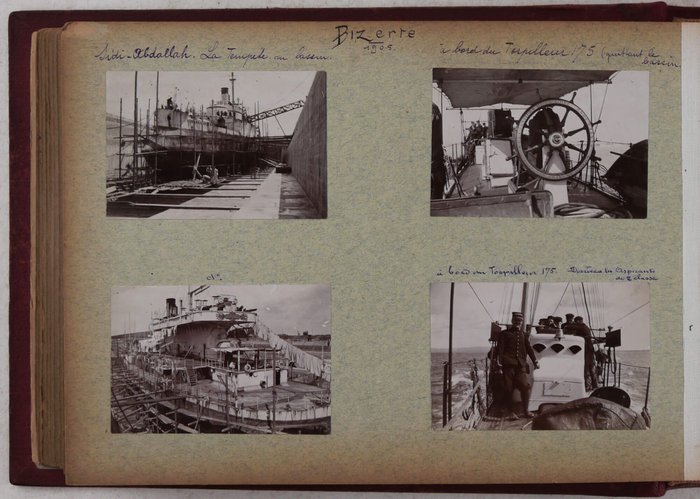
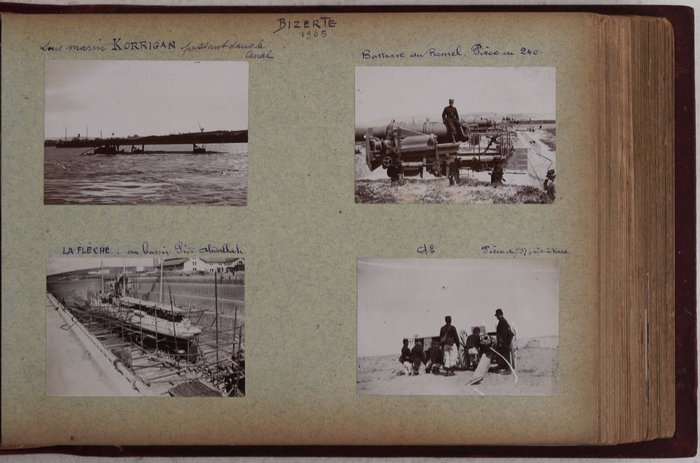

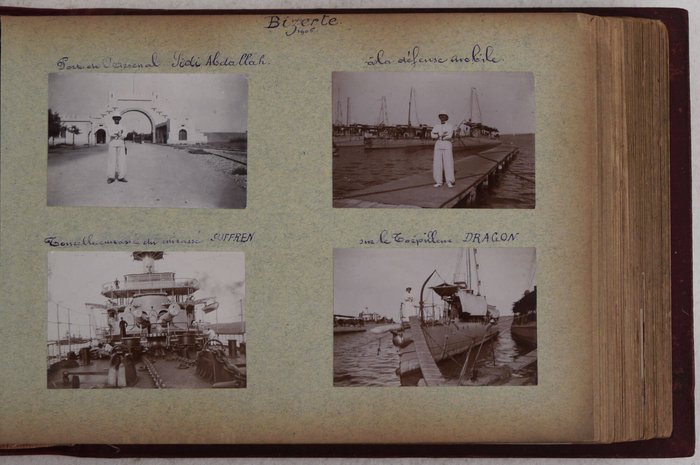

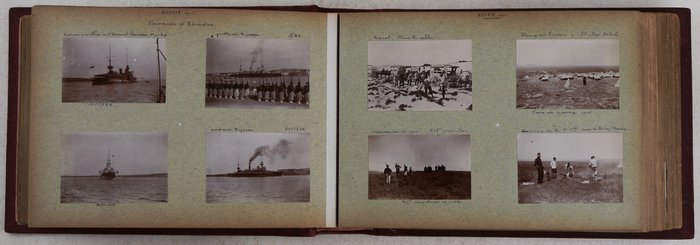
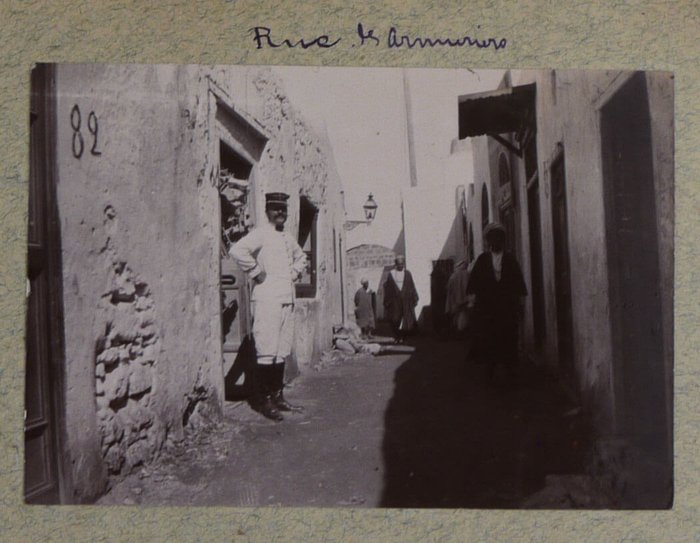
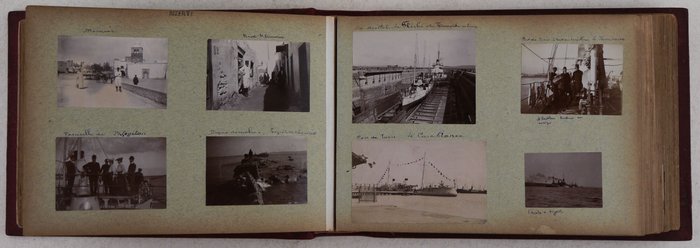
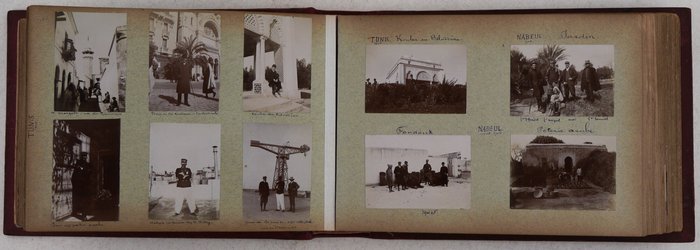
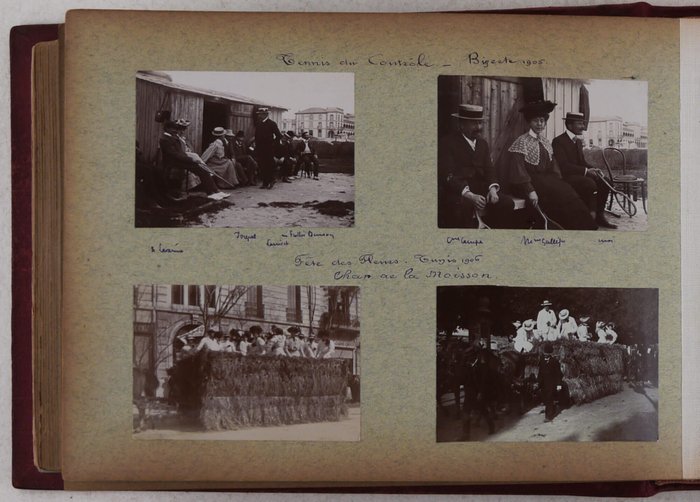
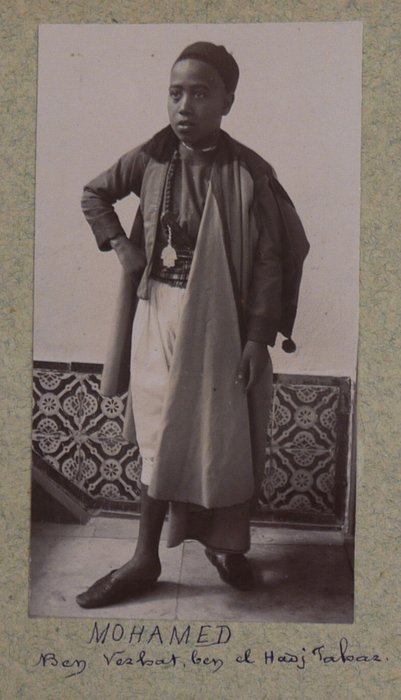
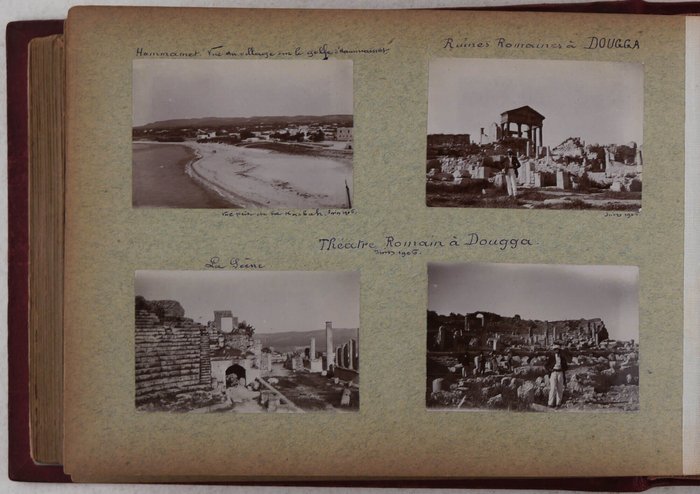
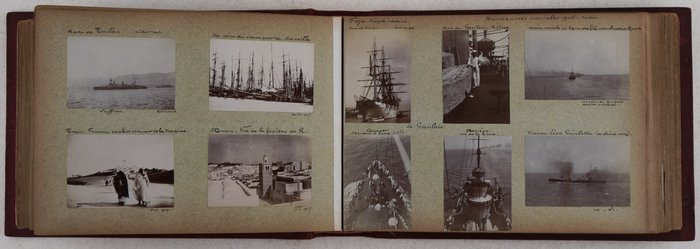
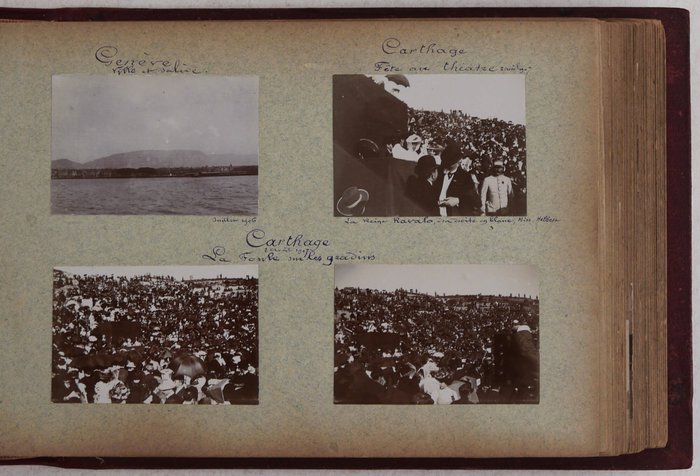
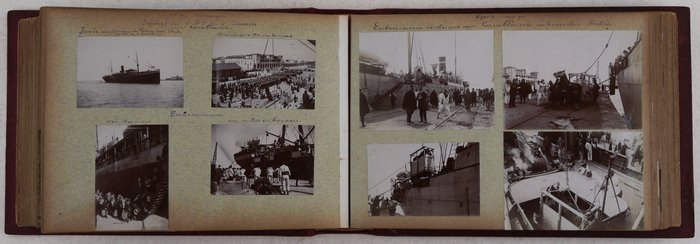
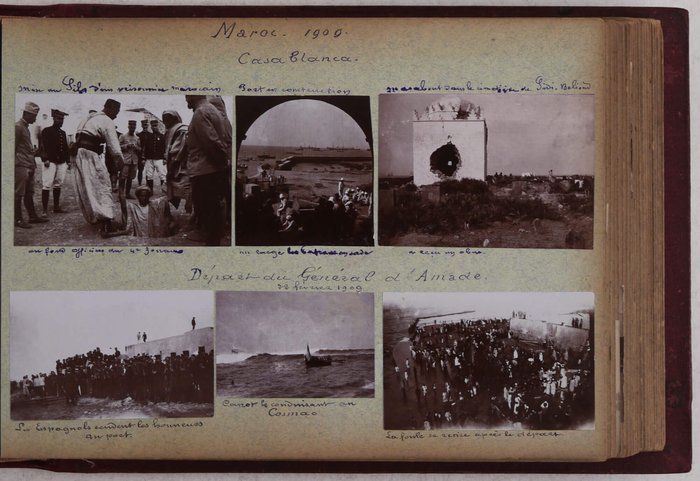

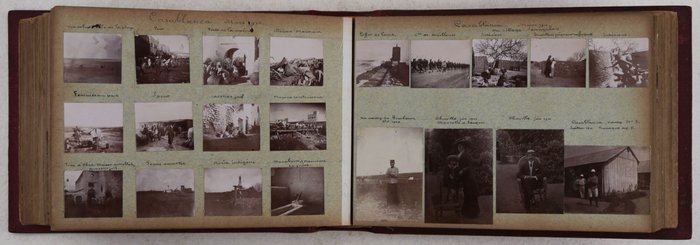
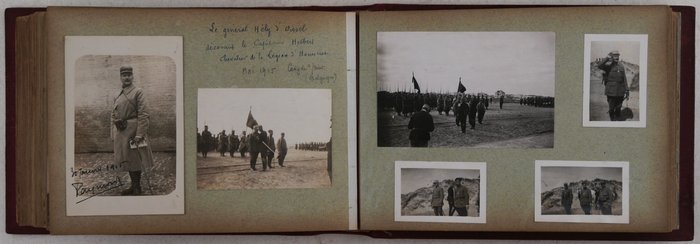
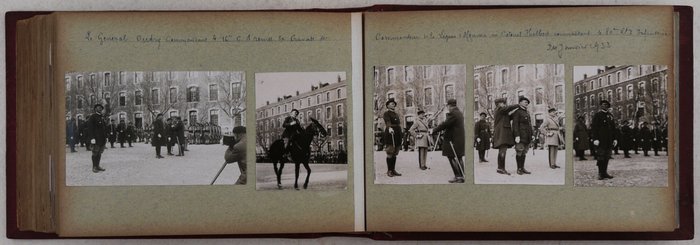
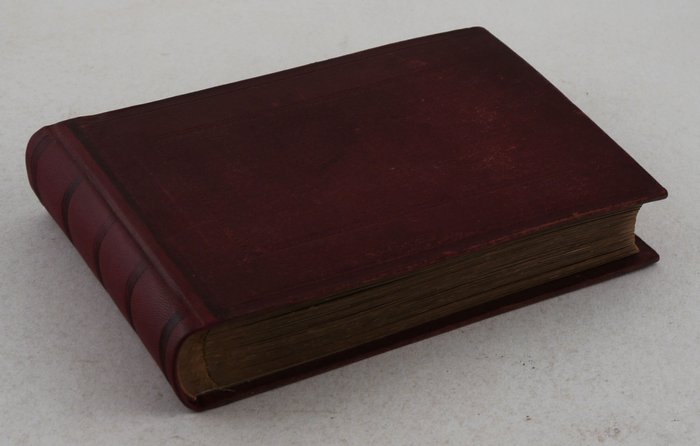
#PD40
Ca. 1904-1919, 1930-1933
Oblong Quarto (ca. 18.5 x 25.5 cm or 7 ¼ x 10 in). 50 cardstock leaves (six blank). Ca. 410 gelatin silver photographs from ca. 13.5 x 8.5 cm (5 ¼ x 3 ¼ in) to 4.5 x 3.5 cm (1 ¾ x 1 ¼ in). Most images with period ink captions in French on mounts. Period red cloth boards neatly rebacked with red morocco; with blind stamped borders on both covers and spine; moire endpapers. Mounts slightly age-toned, one mount with pink coloured stain not affecting photos; one photo previously removed from album, a couple of photos mildly faded, but overall a very good album of interesting photos.
An impressive collection of historically significant gelatin silver photographs showing the service of Colonel Raymond Ferdinand Marie Helbert. Helbert’s career in the French Army started in 1897. From 1903 to 1911, as a Sous-Lieutenant (promoted 1903) and Lieutenant (promoted 1905), he served with the 4th Zouave regiment, based in Tunisia, and took part in the Conquest of Morocco. After the outbreak of World War I, he once again served with the 4th Zouaves in Europe.
Over 70 photographs show French military activity in Tunisia from 1904-1906. Included are views of Sidi Abdallah, the French military base in Bizerte; the Zouave barracks; a party at the Fort d’Espagne in Bizerte, in honor of the Mediterranean squadron of the French Navy; and many ships travelling through Bizerte, identified in the captions. Several photographs are titled “Manoeuvres,” with a given year, and are of various camps of the 4th Zouaves (including one next to a Bedouin nomad camp and one near Metline, Tunisia); a line of soldiers waiting on the “Route de Carthage” with their guns resting in groups of four; cooking at the camps; “artillery in position”; and the 4th Zouaves crossing Bizerte Old Bridge. Other photographs of Tunisia show views of Tunis: Place de la Résidence (Place d’Indépendance) and the Cathedral of St. Vincent de Paul, Mosquée des Teinturiers (Jamaa Al Jadid), the koubba at Belvedere Park, the neighbourhood of Sidi Bou Said, and La Goulette and the ruins of Carthage just outside the city; and views of Bizerte: the Andalusian Quarter; the kasbah; and a “fête des fleurs” in 1906. There are also snapshots of locals in Thala; potters in Nabeul; blacksmiths and farriers in Tunis; a series of photos depicting a festival performance at the amphitheatre in Carthage, one with a caption identifying a woman as “la Reine Ravala”; travelling musicians; Bedouin women and children; a goblet drum player; and Tunisian children Helbert identified as “mes voisins [my neighbours].”
Over 70 photographs show Helbert’s participation in the Conquest of Morocco between 1909 and 1911. They show the departure of General d’Amade (22 February 1909); the “Méhalla des Grands Vizirs” in April 1909; distribution of supplies to the Senegalese Tirailleurs in front of their shacks; Moroccan Goumiers (indigenous Moroccan soldiers) in front of their barracks and patrolling; fantasia, a traditional Maghrebi exhibition of horsemanship; and scenes of Casablanca after the bombardment (1908). There are also photos of Tangier, Settat, Fedala (Mohammedia), and Rabat.
Photos from Algeria show the cities Algiers, Bougie (Béjaïa), and Constantine.
The album also includes photographs from Europe. Several photos show Helbert receiving the rank of Chevalier of theLégion d’Honneur in May 1915; French President Raymond Poincaré bestowing the flag of the 4th Zouaves to Helbert in 1917; and Helbert receiving the rank of Commandeur of the Légion d’Honneur in 1933. Four photos show Helbert during World War I and two photos show him with other commanding officers of the 4th Zouaves in 1918 and the 81stInfantry regiment in 1930. There are also photos of European cities including Avignon, Chaville, Marseille, Toulon, Grenoble, Strasbourg, and Bâle in France; Geneva, Switzerland; Freiburg, Germany; London, England; and Madrid, Spain. Several photographs likely include Helbert’s family.
Overall, an extensive collection of historic photographs depicting the service of French colonel Raymond Helbert in North Africa in the early 1900s.


